









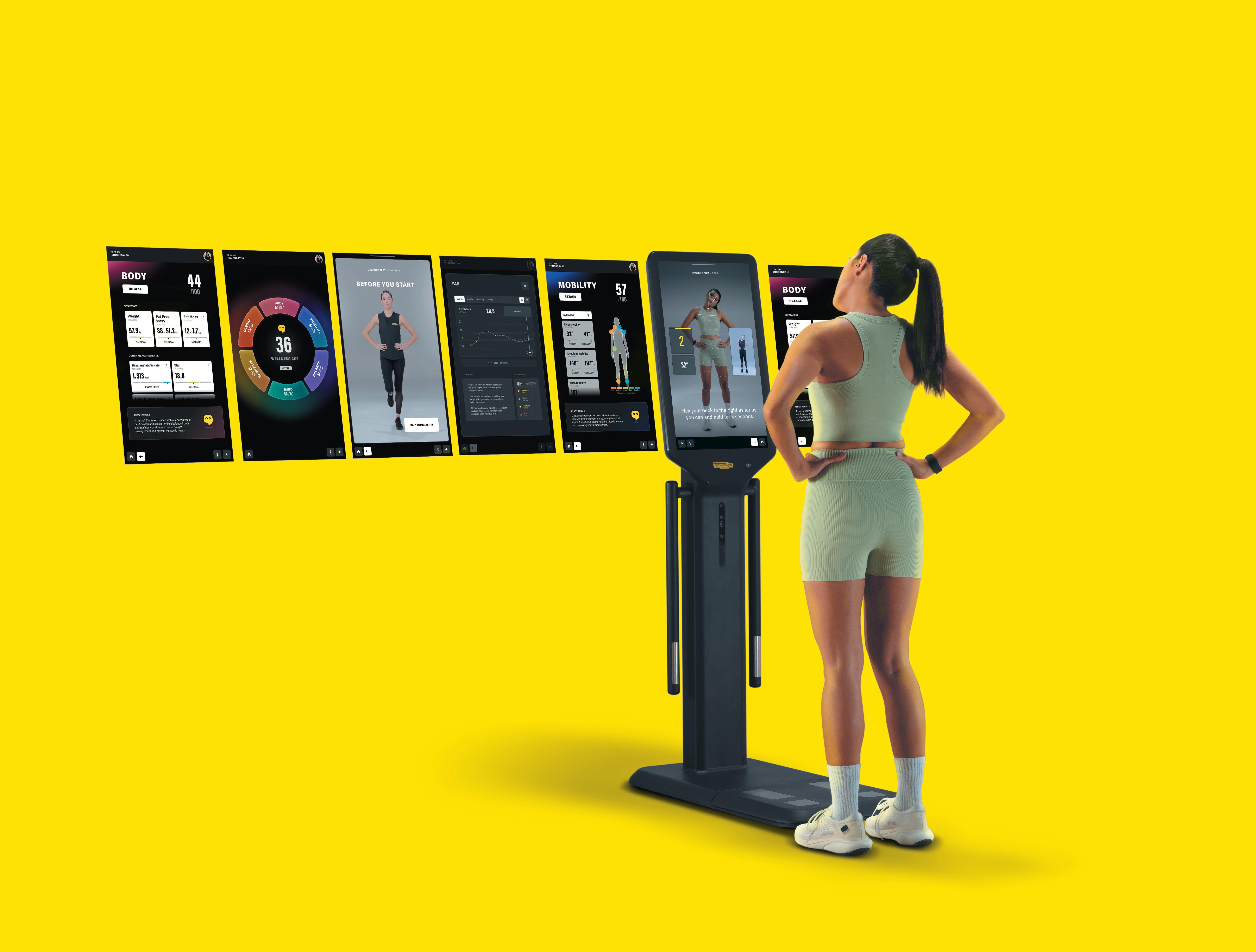
Technogym
PHYSICAL AND COGNITIVE ASSESSMENT:
MIND

MOBILITY
BALANCE
STRENGTH
CARDIO













Technogym
PHYSICAL AND COGNITIVE ASSESSMENT:
MIND

MOBILITY
BALANCE
STRENGTH
CARDIO




The world’s most powerful training ecosystem connects over 200 leading brands across your entire gym floor. Get started on the next stage of your gym success today.







www.egym.com/uk | sales@egym.com



The UK’s new health strategy is a watershed moment for the nation. Now the physical activity sector needs to bond with politicians to enable them to truly understand the benefits delivered by our sector
he UK government’s pivot to prevention will deliver the biggest social change in a century and could transform the health of the nation within a generation if well implemented.
Announced on 3 July, Fit for the Future: 10-year Health Plan for England, will see treatment moving from hospital to community and from analogue to digital, with a range preventative initiatives planned, from the development of neighbourhood health centres to education programmes in healthy living.
Although the physical activity sector wasn’t mentioned in the report and hasn’t been charged with any specific duties, the direction of travel will inevitably see us connecting with healthcare, so we need to be ready, with clear evidence we can deliver change, the programmes to do so and our people accredited.
This months’ move by CIMSPA to issue professional status to exercise professionals is timely and helpful and will move us one step closer to acceptance by healthcare professionals (www.hcmmag.com/profstatus).
Subsequent announcements have come thick and fast since the publication of Fit for the Future , with financial support for Joe Wicks’ new digital kids’ fitness programme (see pages 82/83) and an announcement about WorkWell Centres, which will be licensed to refer people for exercise to help them get ready to return to work (www.hcmmag.com/workwell).
In spite of this good news, however, it’s hard not to feel frustrated at the ongoing lack of engagement by politicians and to mull over what can be done.
It’s a challenge that goes deep – in the same week his government published the health strategy promising to give people advice on healthy lifestyles, British prime minister, Keir Starmer, revealed in a radio interview that he lives on coffee and biscuits and exercises at home without professional guidance. Such a breathtaking lack of awareness among our leaders goes to the heart of this. Not only are we unseen, the benefits we deliver are simply not being enjoyed.

We’re calling on operators to make membership free for a year for all MPs so they can better understand and feel the benefits
We believe getting politicians properly on-side has to be part of our sector strategy and HCM is calling for operators to make facilities free for a year for politicians, so they can fully comprehend what we do. Let’s encourage them to get involved, so they can personally experience the power of living well.
It’s a simple idea – there are only 650 MPs in the UK, so no-one would take a major hit by doing this – and it could create a powerful bond and deeper understanding, making it more likely our true value and potential is finally recognised.
Liz Terry, editor lizterry@leisuremedia.com

74 Joe Wicks launches Activate kid’s exercise programmes
05 Editor’s Letter
As the UK government reveals its intention to pivot health services to prevention, Liz Terry asks what role the physical activity sector can play
12 HCM Forum
Europe Active’s Kai Troll gives a briefing on an EU obesity initiative and Paul Batman calls for a new focus on achievable exercise
18 Zeitgeist
HCM highlights emerging trends from GymNation’s ice workout and Life Time’s sports racing concept, to the launch of Re:Set by Pure and the growth of robot massage
22 HCM news
Everlast will roll out 60 Hyrox Performance Centres in the UK, Planet Fitness may be stalking Basic-Fit and Gurner Group is going global
26 HCM buzz
Urban Gym Group opens a new Gymbox in London, Go Fit reveals a ‘health factory’ in Tenerife and Third Space launches Performance Lab
32 HCM people
Sarah Luna
The former president of Xponential and founder of Club Pilates is back with Pilates Addiction and focused on rapid growth, as she explains to Kath Hudson
38 HCM people
Brittany LeBoeuf
The exercise physiologist and research scientist is leading on brain health at Orangetheory. She talks to Kath Hudson
44 Interview
Steve May
The CEO of Mytime Active is delivering fitness and wellness interventions both within facilities and in the community. He explains all to Kate Cracknell.
56 Life Lessons
Chuck Runyon
The co-founder of Anytime Fitness talks about building Self Esteem Brands and his partnership with Dave Mortensen



60 Everyone’s talking about The place-based model
Public sector leisure and physical activity services in the UK are increasingly being customised to local needs via place-based initiatives, we talk to those driving change
68 New dawn
Duncan Wood-Allum says the UK’s plans for local government reorganisation will open up huge opportunities for the sector
74 Pivot to prevention
A ten-year plan for health has been published for the UK, with a pivot to prevention at its heart. Kath Hudson gives a briefing and also reports on Joe Wicks’ allied kids’ fitness initiative





84 Systems upgrade
Tech innovations are handing operators powerful tools, finds Julie Cramer
94 Product innovations
The latest health, fitness and wellness kit from leading suppliers
96 HCM Directory
If you’re in procurement, the HCM Directory is part of a network of resources designed for you that includes www.HCMmag.com/CompanyProfiles
98 Research Phones for good
The industry has a role to play in helping young people with positive phone use

theteam@leisuremedia.com

Editor
Liz Terry
+44 (0)1462 431385

Managing editor
Julie Cramer
+44 (0)1462 431385

Editor-at-large
Magali Robathan
+44 (0)1462 431385
Publisher Jan Williams
+44 (0)1462 471909

Head of news
Kath Hudson
+44 (0)1462 431385

Assistant editor Helen Andrews
+44 (0)1462 431385
Email us:
Customer service
+44 (0)1462 471901
Advertising
+44 (0)1462 431385
Subscriptions
+44 (0)1462 471910
Circulation
+44 (0)1462 471932
Finance
+44 (0)1462 471930
Credit control
+44 (0)1462 733477



Choose how you read
HCM digital
Read free online and enjoy extra links and searchability www.HCMmag.com/digital
HCM magazine is available in print from www.leisuresubs.com
A PDF edition is available to read offline at: www.HCMmag.com/pdf

Other resources from
Fit Tech magazine www.fittechglobal.com www.fittechglobal.com/archive
HCM Handbook www.HCMhandbook.com www.HCMhandbook.com/pdf
HCM Online library www.HCMmag.com/archive
HCM Ezine & Instant Alerts www.leisuremedia.com/subscribe Leisure Opportunites jobs & news www.leisureopportunities.co.uk
Buyer Search Engine www.fitness-kit.net
GLOBAL MEDIA PARTNER







To subscribe to HCM in print (Health Club Management): log on to www.leisuresubs.com , email subs@leisuremedia.com or call +44 (0)1462 471930.
Annual subscriptions: UK £45, Europe £57, rest of world £80, students (UK) £22.
Style: HCM follows an editorial house style which precludes the use of marketing devices in body text and headlines when it comes to company names and registered trademarks. CamelCase and logical capitals are allowed. Contact the editor for more details – lizterry@leisuremedia.com.
Copyright details: HCM (Health Club Management) is published 12 times a year by Leisure Media, PO Box 424, Hitchin, SG5 9GF, UK. The views expressed in this publication are those of the authors and do not necessarily represent those of the publisher. All rights reserved. No part of this publication may be reproduced, stored in a retrieval system or transmitted in any form or by means, electronic, mechanical, photocopying, recorded or otherwise, without the prior permission of the copyright holder, Cybertrek Ltd 2025. Print and distribution Printed by The Manson Group Ltd. Distributed by Royal Mail Group Ltd and Whistl Ltd in the UK and Total Mail Ltd globally. ©Cybertrek Ltd 2025 ISSN 1361-3510 (print) / 2397-2351 (online)









Find out how Fitness & Lifestyle Group sent group training attendance soaring. Read the case study.
Find out how Fitness & Lifestyle Group sent group training attendance soaring. Read the case study.
Fuel
the debate about issues and opportunities across the industry.
We’d love
to hear from you. Write to forum@leisuremedia.com
EuropeActive
recently attended an event on obesity strategy at the European Parliament, hosted by MEP
Collaborating with healthcare on obesity
Kai Troll, CEO, Europe Active
Obesity rates in Europe have more than doubled in the past 40 years, with over half of EU adults and nearly one in three children in the WHO Europe region now overweight or obese.
To develop solutions to this crisis, EuropeActive recently attended an event at the European Parliament called Connecting the dots: obesity, digestive diseases and cancers , hosted by MEP Romana Jerković and organised by United European Gastroenterology.
Key takeaways to share are firstly that obesity isn't a personal choice, but is often shaped by environments, inequality and stigma.
Language matters – delegates were advised to avoid blaming people, instead focusing on systemic change.
While the scale of the obesity epidemic is enormous, requiring bold policy interventions, as well as mass media campaigns and educational programmes, physical activity must be recognised as a key part of the solution.


The event highlighted the powerful preventative and therapeutic role of physical activity in supporting a healthy body weight and improving overall health and quality of life.
There was also a focus on the growing need to integrate exercise professionals into healthcare systems to support cardiovascular health and preserve muscle function.
Experts advised that prevention efforts must target all age groups, with particular focus on children.
Tackling obesity calls for collaboration and the sector can play a meaningful role by supporting prevention.
Jerković said: “We’ve started connecting the dots, now it’s time to draw the line and create policies that are coherent, collaborative and impactful.”

It’s time to consider a complementary model of physical activity
Paul Batman, founder, Reframing Exercise
The World Health Organization’s guidelines provide a blueprint for physical activity, however, many countries struggle to implement them, highlighting the need for a populationbased approach to complement existing programmes.
We need options that support people in making the journey from being inactive to being active, without expecting them to jump straight to meeting WHO guidelines.
A complementary programme, called Movement is Wellbeing, encourages people to explore exercise by encouraging sustainable physical activity that emphasises the positive emotions associated with movement, including enjoyment, social connection and purpose.
This reframes the message in ways that resonate, creating a desire to be more active and encouraging people to seek improvements in

Movement is Wellbeing acts as a powerful bridge to Exercise is Medicine, making the transition easier
their health, rather than focusing on goals associated with Exercise is Medicine, such as weight loss and high levels of fitness.
Movement is Wellbeing also acts as a bridge to Exercise is Medicine, making the transition easier.
It isn’t a replacement for the Exercise is Medicine message, but an alternative for those who struggle with traditional exercise approaches or who are more motivated by feeling good in the moment.
It also provides choices that are convenient, enjoyable, affordable, unintimidating, sustainable and achievable, while also fostering active habits, self-selection, emotional attachment and social connection.
There’s an emphasis on small changes over time, education and a sense of identity, all of which are cornerstones of creating active lifestyles.
Turn the page for more...

Inactivity Movement is Wellbeing Exercise is Medicine


Not meeting the WHO guidelines for physical activity and exhibiting sedentary behaviour that threatens quality of life and undermines good health and wellbeing.

Taking every opportunity to engage in any activity at any speed and for any amount of time, with whomever you like at any venue and at any time.
Priorities: Physical, mental, emotional and social wellbeing

Messages:


1. You’re not alone if you find it difficult to maintain motivation to exercise.

2. You don’t have to do very much physical activity to improve health and wellbeing.

3. Building daily intermittent movement into everyday life to break up prolonged periods of physical inactivity is the cornerstone of health and wellbeing.

4. Every life-based movement counts in improving health and wellbeing.

5. Consistency over intensity – muscle-organ cross-talk can reduce inflammation.

Exercise is Medicine treats chronic diseases to allow you to live a longer, higher quality life. Healthcare systems think of exercise as a medication that should be prescribed for patients.

Priorities: Better body image, weight loss, peak fitness, general health improvements
Recommendations

1. Exercise at moderate intensity for 150 - 300 minutes per week.

2. Exercise at vigorous intensity for 75 - 150 minutes per week.



3. Perform resistance exercises on two days each week.
4. Limit sedentary time and replace it with activity.

5. Perform activity that emphasises balance (older adults).

More: www.hcmmag.com/paulbatman






Queen Elizabeth II Conference Centre, London












Excitement is building for the all-keynote HCM Summit 2025 from Leisure Media, HCM magazine and Spa Business magazine.

The event will bring together a powerful lineup of speakers and contributors from across the industry to share creative insights and experience, with a focus on business success and innovation.
You’ll go away inspired and informed, with ideas to implement in your own professional life, as well as valuable contacts and access to best practice to drive your success as we head into 2026.
In addition to the summit talks, a carefully curated exhibition will showcase the latest innovations, while summit networking events, including the After Party, hosted by Les Mills, will give the opportunity to connect, make new contacts and do businesses.
All this, along with product sampling, book signings and activations make the summit a powerful and useful event for the sector.









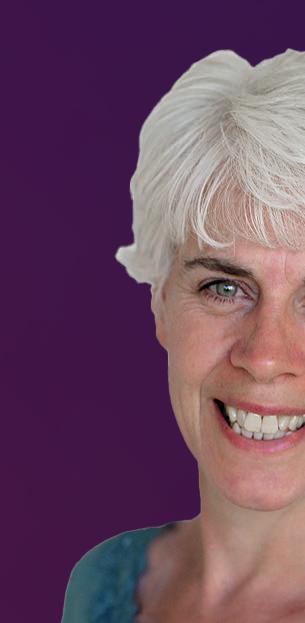




























































































































































Go to www.HCMmag.com/signup to get breaking news alerts
Kath Hudson distills the essence of the latest HCM news to tap the trends driving the direction of the sector

… of the HCM Summit 2025. He says: “I’ve always believed that by sharing knowledge, exploring emerging trends and building meaningful connections, we’re not only advancing the industry, but we can also learn great lessons for our businesses. And, of course, we’ll be inspiring impactful change that supports healthier lives and stronger communities around the world.”
See the speakers and book here: www.HCMsummit.live
Toronto start-up, Othership, has raised US$11.3 million to expand its sober social wellness concept across the US as alcohol use declines. Co-founder, Robbie Bent: “Not long ago we were just running ice baths in my backyard. One tub. One person at a time. Just trying to make someone feel safe enough to breathe a little deeper, cry sometimes and feel something.
http://lei.sr/Z4S2p_H

www.HCMsummit.live
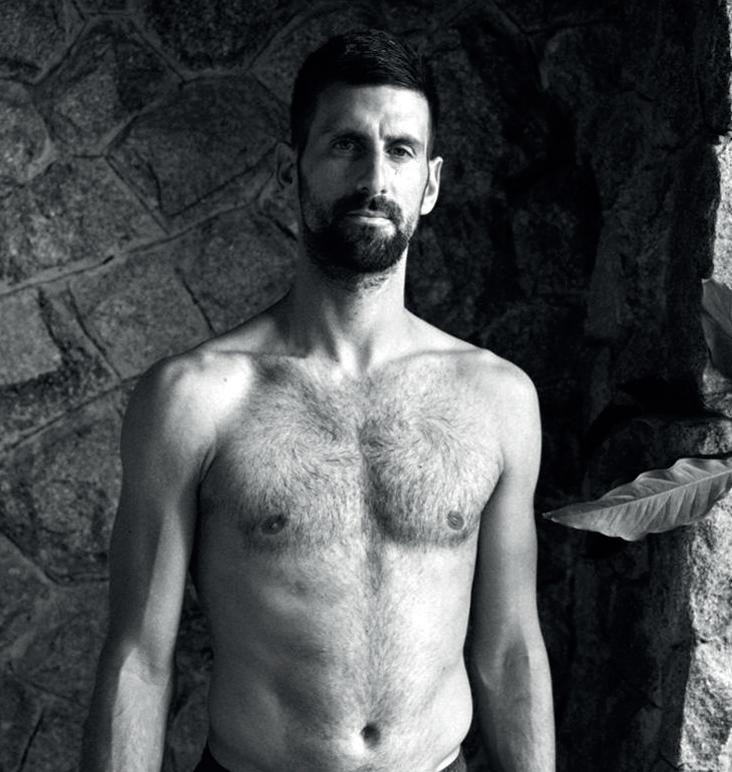
With one eye on life after tennis, Novak Djokovic is backing an immersive wellbeing chamber, Regenesis. Light therapy, sound frequency, pulsed electromagnetic fields, aromatherapy, crystal energy and infrared heat are blended into an experience which promotes mental and physical recovery. Regenesis will launch later in 2025
http://lei.sr/f5y5P_H

“When the summer heat hits its peak, finding ways to stay active without overheating becomes a challenge. We’re turning that challenge into an opportunity offering a fun, refreshing way to beat the heat while smashing fitness and wellness goals.”
Rory McEntee, CMO, Gymnation


North Herts Council in the UK is investing £16.4 million in a decarbonisation programme at three sites, which will reduce carbon emissions by more than 60 per cent and improve energy efficiency.
http://lei.sr/T7j6v_H
Fahid Island in Abu Dhabi will be Fitwel certified and cost US$11 billion to bring to fruition.
“While consumers have long engaged in ‘health tourism’ we’re seeing home buyers become more motivated by holistic wellbeing in all areas of life, suggesting ‘health house buying’ and ‘health relocation’ could become a wider trend over the next few years.”
Jonathan Emery, CEO of Aldar Development

As Sport England launches a £160m green fund chair, Chris Boardman, says: “Extreme weather and environmental pollution is having a devastating impact on physical activity levels. It’s damaging our nation’s health and productivity. Sport has a unique global megaphone and influence on wider society. By leading the way and advocating for change, we can inspire wider society to act.”
http://lei.sr/V9J4M_H

The US$11 billion development will be Fitwel certifi ed

Following the acquisition of events company, High Performance Lifestyle Training, US operator, Life Time, is rumoured to be trialing a Hyrox-style concept called Life Time Games.

Mounjaro is now available from doctors in the UK for those who meet the criteria.


Maybourne has opened its second Surrenne wellness hotel with indoor/outdoor studios. This cliff top haven on the Mediterranean offers private members and hotel guests three floors of health and wellness, with views of France, Monaco and Italy.
http://lei.sr/f2B5P_B

UK charitable trust, Oldham Active, has appointed Lauren Connis as head of health and wellbeing. Her new role aims to strengthen links with the healthcare sector as well as funding and launching programmes to tackle health inequalities.
http://lei.sr/X5y7f_H
“Robotic arms have been designed to deliver double the bodywork in half the time”

Massage robots are being trialled by health and fi tness operators

UK charity, Everybody Health and Leisure, which runs facilities for Cheshire East Council, has taken over a large commercial club, Simply Gym in Crewe.

Massage robots are proliferating. Find out more in our in-depth Spa Business report.

Colin Grant has launched a new recovery brand, Re: set by Pure, in Hong Kong. “The studio features several technical world-firsts,” says Grant, “including a progressive cold shower system engineered for gender-specific physiology”.
Planet Fitness – which opened its first site in Europe last year – is rumoured to be positioning for a takeover of Basic-Fit.
The news, which seems to have originated from Belgian investment bank, KBC Securities, caused Basic-Fit’s shares – which have not typically reflected the quality of its performance – to rise on the Amsterdam stock exchange.
Founded in 1984 as HealthCity by founder CEO René Moos, the Basic-Fit rebrand came in 2013.


René Moos founded Basic-Fit, Europe’s largest gym chain, in 2013
The company has a market value of almost €1.7 billion, with more than 1,600 clubs in six European countries. Basic-Fit is the fastest growing operator in Europe, with a consistently strong performance. In April, it announced it had increased its membership in the first quarter by 213,000 to 4.5 million, while revenue had risen by 17 per cent
to €332 million. It is aiming for a turnover of between €1.375 billion and €1.425 billion this year.
In March Basic-Fit said it would slow the rate of new development in 2025 and 2026, to 100 new gyms a year, in order to reach a desired two-times leverage target.
More: http://lei.sr/F9j9p_H

Everlast Gyms is partnering with Hyrox to roll out 60 Performance Centers across the UK and Ireland by 2028 within its existing health clubs.
The move is part of a deal that will see the operator becoming the official national partner for the sports racing brand.
The partnership follows on from Sports Direct – also part of Frasers Group – being named as official title sponsor for five Hyrox races in 2025.
The first Hyrox Performance Centers will open in Liverpool, Manchester and Dublin within the next six months, delivering elite training environments for the Hyrox, sports racing and functional fitness communities.
Each Hyrox Performance Center will replicate the full
race-day experience and be outfitted with official Centr x Hyrox competition equipment.
Everlast will introduce dedicated Hyrox classes and training programmes designed to help members of all levels prepare effectively. Everlast Gyms members will also receive early access to Hyrox tickets for upcoming events.
Michael Murray, CEO of Frasers Group, said: “Bringing Hyrox Performance Centers to the UK is a milestone for Everlast Gyms and the fitness community. Our ambition is to create aspirational training environments and be at the forefront of performance-led functional fitness and recovery at an accessible price.”
More: http://lei.sr/y7P9P_H
The Gym Group will be continuing to follow its Next Chapter strategy going forward and is confident for the full year, following the launch of its half year results.
“We’re really pleased with the continued momentum in the first half of the year when it comes to trading, delivery and progress of our Next Chapter growth plan,” CEO, Will Orr, told HCM. “We’re seeing improving returns on the mature estate, the new sites are performing well and we’re opening new sites from free cash flow, so we’ve got a nice virtuous circle of sustained growth.”
Average membership was up 4 per cent to 953,000 as the operator pushes towards the million-member mark and revenue was up 8 per cent and 3 per cent on a like-for-like basis.

We’re opening new sites from free cash flow and have a nice virtuous circle of sustained growth
Orr is confident of meeting the guided target of 14 to 16 sites this year, with three opened so far and work on site at four more. Hyrox classes are now running at half of the gyms and the introduction of recovery areas is on the horizon.
More: http://lei.sr/C3V7S_H

EGYM Hussle and SLM have entered into a partnership that will see 182 Everyone Active venues added to EGYM Hussle’s B2B fitness marketplace.
The collaboration aims to drive increased participation through EGYM Hussle’s employee benefits service, which is used by major employers and medical insurers, including AXA Health and Bupa.
EGYM Hussle already partners with operators such as Nuffield Health and Fitness First UK, however Everyone Active is the first major public sector operator to join the platform.
Hussle was acquired by EGYM last year, and has since shifted its focus entirely to the B2B sector. CEO, Jamie Ward, says: “The extensive reach of the Everyone Active estate will significantly enhance our ability to promote fitness as preventative care and drive up productivity among employees and private medical insurance members across the UK.”

Duncan Jefford, regional director of Everyone Active, says: “EGYM Hussle’s platform provides an exciting opportunity to reach new audiences through corporate and insurance partnerships. We see this as a major growth opportunity that aligns perfectly with our mission to get more people active and improve the health of our communities.”
The expansion of the network has been supported by the US$200 million investment in 2024 from L Catterton and Meritech Capital. ● L Catterton’s Marc Magliacano will keynote at the HCM Summit in London on 23 October 2025. Book here: www.HCMsummit.live
More: http://lei.sr/2J9n2_H
Tim Gurner, Australian developer and founder of Gurner Group, is taking the wellness concept, Saint Haven, global with plans for its first locations in the UAE (in Dubai) and the US by the end of this year.
There are plans for 20 to 30 sites around the world under the company’s various brands by 2030.
Each offers a mixture of personal training and group fitness, meditation, breathwork, food and nutrition, health check-ups, massage, ancient baths, recovery facilities and longevity treatments.
The concept also offers techled preventative wellness and recovery options. These include hyperbaric oxygen chambers, cryotherapy suites, steamrooms, IV infusions, and red light beds.
The sites also feature a bathhouse with various pools, such as magnesium and cold plunge, as well as a wholefoods restaurant, cafe and co-working spaces.

Gurner Group aims to open 20-30 sites globally by 2030 under its various brands
Expansion is also planned in Australia with, two new locations being developed in Sydney – a flagship club in Bondi Beach and a 3,000sq m site in north Sydney.
The Bondi Beach location is due to open in Q2 2026 and is expected to reach capacity before opening due to having a
limited number of memberships – estimated to be around 400.
“Bondi is a global icon of health and wellness and Saint Haven will take that to another level. This will be unlike anything Sydney has ever seen,” says Gurner.
More: http://lei.sr/W5D7e_H

Shares in Xponential Fitness are rising following the news that the US Securities and Exchange Commission investigation (SEC) into the company has closed with no enforcement action being taken.
The investigation into the boutique franchisor started on 11 December 2023 and was looking into potential securities fraud and accounting issues. It followed a short-seller report from Fuzzy Panda Research, in June 2023, which accused the company of inflating performance, overextending franchisees and relying on questionable practices.
On 1 July the SEC informed the boutique franchisor that it had concluded its investigation without action.
A separate investigation by the US Attorney’s Office for the central district of California is still ongoing, with which the company is co-operating.
Xponential Fitness is currently on the hunt for a CEO after Mark King’s recent announcement of his retirement.
During his year in post he said he had strengthened the leadership team and worked to stabilise the company for short and long-term growth, although losses have been mounting.
Former CEO, Anthony Geisler, has re-entered the market with a new franchising company, Sequel Brands, helmed by many former Xponential execs (see Sarah Luna profile, p32).
More: http://lei.sr/X4Z5t_H
Marc Diaper, previously CEO of Gymbox, is now in post as the new CEO of Fitness First, taking over from Justin Musgrove, who left in May.
Diaper – who worked his way up from being a PT and sports therapist – was with Gymbox for 14 years as sales and marketing director, MD and finally CEO – a post he held for eight years, steering the company through the pandemic.
“I’ve long admired Fitness First as a pioneer – one of the brands that first introduced us all to fitness,” says Diaper. “I’m honoured to join one of the industry’s most iconic brands as CEO.”
Chair, Scott Best, said: “Marc is a leader with incredible energy and a proven track record of innovation
and growth in the fitness industry. He has an exceptional entrepreneurial drive, with a real passion for team progression and development.
“He also has a clear vision for growth and innovation at Fitness First and I’m confident he’ll propel the business into an exciting new era.”
Diaper said: “I see significant opportunities to build on the great work completed by Scott Best, Justin Musgrove and the team over the past few years and am excited to join such a talented and passionate team as we enter a new and exciting phase of growth.”
Diaper left Gymbox when it was acquired by Urban Gym Group in October 2024.
More: http://lei.sr/9D2X7_H

Acreditors’ voluntary liquidation is in progress at Londonbased boutique operator, United Fitness Brands (UFB).
Chief brand director, Hilary Rowland, has confirmed to HCM that the CVL is in process and a yet to be named entity is interested in buying the assets.
Industry insiders have told HCM it’s likely the assets will be bought back by one of the existing shareholders. Rowland is now the sole director.
UFB was formed in March 2021 and backed by Pembroke VCT, Nectar Capital as well as some high net-worth individuals. The plan was to merge with other boutiques to make a supergroup of boutique brands, which could pool resources, share expertise and work collectively. It also opened up expansion opportunities as more than one brand could go into a space.
At the time of the merger Rowland told HCM: “We’re looking for brands

that have become successful because they’ve developed their own identity and created a loyal community of users. We want to make sure each brand has a better opportunity to grow and develop by sharing resources and operating in a more efficient way.”
The first brands under the UFB umbrella were Boom Cycle – Rowland’s category-defining
indoor cycling concept – and Joe Cohen’s boutique boxing concept, Kobox. Barrecore followed in April 2021 and Triyoga a year later.
Reformer concept, Reformcore was developed in 2023 and when Richard North joined the company plans for franchising were announced.
More: http://lei.sr/5C5j7_H



Urban Gym Group opened its first new site since acquiring Gymbox in October 2024. The 22,000 site in London’s Finsbury Park will become the blueprint for future clubs and is the 10th club in London.
More than £250,000 has been invested, with architect, Patrick McKinney, responsible for the design. Features include adjustable lighting to create different moods and a DJ booth.
The extensive gym features equipment by Eleiko, Woodway, Rogue, Concept 2, Blackbox, Life Fitness Hammer Strength and Stronger Wellness.
There is also a group exercise area – which will be fitted out with bungees and equipment to offer aerial classes – a 28-bike indoor cycling studio and a 16-bed PILAT3S reformer Pilates studio. Reformer Pilates is included in the £95 a month membership.
Almost 100 classes are offered across the three studios each week, including Hyrox classes and Baz Moffat’s Bloody Good Workout, which is aimed at women.
The site also features infrared saunas and Brass Monkey cold plunges in the changing rooms. There’s also red




light therapy and a recovery area with a hydromassage chair, compression boots, rollers and an InBody scanner, as well as complementary protein shakes and hot beverages.
Gymbox has partnered with personalised meal delivery platform, Calo, which offers high-quality meals that support health and fitness goals.

This club represents a new chapter in the evolution of Gymbox
“Finsbury Park represents a new chapter in Gymbox’s evolution,” says Neil Randall, CEO of Urban Gym Group. “It reflects our ambition to integrate recovery alongside performance, offering a more complete approach to training and improving overall wellbeing, while keeping the DNA of what makes Gymbox a loved brand in London.”
Neil Randall
Following the acquistion of three new sites in the Netherlands, which will be rebranded as Trainmore Red Label, Randall told HCM the company is seeking new sites: “As demand for Trainmore and Gymbox continues to grow, we remain focused on expanding into iconic locations in London and key cities across the Netherlands. We’re open to both greenfield opportunities and acquisitions and we actively encourage property developers, landlords and gym owners to get in touch with us.”
● Neil Randall will keynote at the HCM Summit in London on 23 October 2025.
To book, go to www.HCMsummit.live

Members will get a personalised plan via the Go Fit app
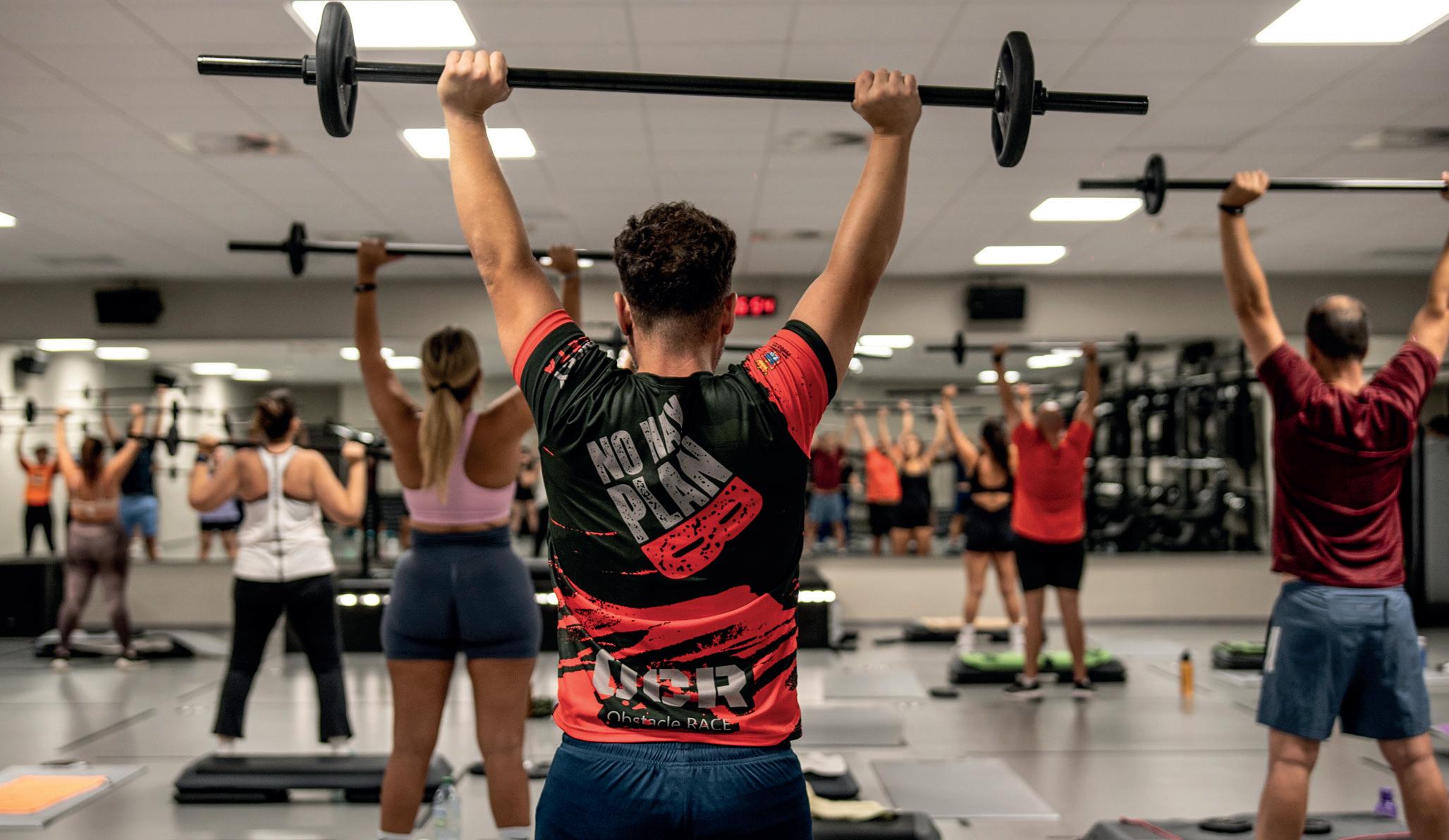
Go Fit has invested more than €20 million in its latest development, a 22,000 square metre sports and wellness hub in Tenerife.
This is the Iberian operator’s second site in the Canary Islands. It now has 21 operating sites and will expand into Italy this year. Strategic European cities are being targeted for projects where the company can partner with the local government.
Go Fit Santa Cruz is being operated under a 40-year public-private partnership with the local authority, the Ayuntamiento de Santa Cruz de Tenerife.

This landmark opening underscores Go Fit’s commitment to sustainable urban wellness
Facilities include three swimming pools – for training, learning and hydrotherapy – a 1, 700 square metre gym, four group exercise studios, a sports pavilion, tennis and padel courts, a spa with a thermal circuit and sauna and a children’s play centre.
The building is almost carbon-neutral, with no natural gas used and offsetting for residual emissions.
Mario Barbosa
It will serve more than 12,000 people and all members will be offered a personalised wellbeing experience called the Go Fit Method. This involves assessment, evaluation, personalisation of training plans and 1:1 ongoing support delivered through the Go Fit app.
Mario Barbosa, CEO of Go Fit, says: “This project will drive urban regeneration – positioning sport as a cornerstone of wellbeing and social cohesion. Go Fit Santa Cruz Tenerife sets a blueprint for future civic wellness hubs – where highquality user experience, climate responsibility and cost-effective design intersect seamlessly.”
José Manuel Bermúdez, Mayor of Santa Cruz de Tenerife, said: “We’re opening the largest sports complex in Santa Cruz’s history and what I have called from the beginning a health-making factory, for which many people and institutions have pulled together, come wind or high water, since 2017.”




Premium London operator, Third Space, has launched a pioneering performance testing facility, the Performance Lab, at its newly renovated Mayfair club.
Priced at £375 and delivered by upskilled members of the Third Space team, the service consists of 90 minutes of performance testing using state-of-the-art technology, sourced from longevity innovators. After the tests members receive a detailed report and consultation to allow them to optimise their health and train effectively for their goals.

“We’ve created a space that empowers members to take control of their healthspan with tools once reserved for professional sport”
Three options are on offer: The Endurance is created for those training for distance events and assesses performance under fatigue. The Hybrid-Athlete is designed for those training for strength and endurance events, such as Hyrox and The Longevity targets overall wellbeing and healthy ageing.
All three begin with an InBody body composition test, followed by Shosabi Movement Screening – a 3D motion sensor that uses AI to assess range of movement and provide real-time feedback on form,
Joshua-Silverman
strength, flexibility, movement patterns and range of motion.
Power, endurance and force are measured with different tests depending on the chosen programme, they include VO2 max testing, grip strength, single leg stands and a 50 rep hop test.
Head of education, Josh Silverman, says this is the future of health optimisation: “We’ve created a space that empowers members to take control of their healthspan with tools once reserved for professional sport, our Performance Specialists empowers members to interpret their results and make proactive lifestyle decisions to benefit their future selves.”
Third Space has also launched a Recovery Spa at Canary Wharf, offering cryotherapy, red light therapy, acupuncture, cupping, massage, IV infusions and access to a vibroacoustic bed. An infrared sauna and cold plunge will also be added. A Recovery Membership has also been launched, costing £300 a month.






Members pay £375 for the performance tesing, which takes 90 minutes
My goal isn’t to take over or take down Club Pilates but to run alongside it
Sarah Luna
CEO, Pilates Addiction

You’re back with a new brand. How is Pilates Addiction different from other reformer concepts?
I spent many months researching what’s being offered and where the demand is going. We're seeing a younger demographic who want to participate in Pilates, but feel as though it isn’t vibey enough, or at the right intensity, so we looked at who’s competing in the space.
At the moment we’re seeing traditional Pilates and then bootcamp Pilates-inspired concepts, which leaves many of the Pilates principles behind. There’s nothing in between that both builds on the Pilates principles and offers a consistent intensity. Pilates Addiction reaches to solve that problem. We believe it's Pilates 3.0 and the best of both worlds.

What makes Pilates Addiction really special is the fact we have our own proprietary equipment, the Wundaformer. It’s a Wundachair, a reformer, a ballet barre and a jump board all combined. What we love about it is that it’s really easy to use and has very minimal configuration or setup time, making for a time-efficient workout. It's very easy to use and to have a great first time experience. It's a game changer.
Pilates Addiction has been kickstarted with the acquisition of Wundabar, what’s the history of the company?
Wundabar is the best kept secret in Pilates. It’s a tried and tested concept which has been around for 14 years and currently has 11 locations: nine owned by the founder, Amy Jordan, and two other franchisees. It has a great footprint and is performing

very well, but as a single operator there was limited capital and resources to scale the brand. We now own the brand and franchising rights to take it forward. Amy Jordan and the other franchisees have kept their locations, which will be converted from Wundabar to Pilates Addiction, and the Wundabar brand will sunset. Amy has a development schedule of 11 locations to come to market and has been great to work with – she sees this as a partnership.
Was Wundabar already skewing younger?
Yes, that's what made it highly attractive for us to want to franchise it. It was already geared towards the younger demographic and had the right product approach we were looking for. Under
Wundabar, the studios were white and bright. At Pilates Addiction, we’ve created a more sensory environment that appeals to a younger crowd; so the studio experience ultimately matches the intensity of the workout and is supported with great lighting and music. We're also evaluating the class formats and the way the Pilates educators are teaching the classes to ensure consistency and an updated class standard that matches the whole new experience.
How different or similar is your day to day job from what you were doing at Xponential Fitness?
Very different. It's been fun to focus on a single brand and be back on the ground floor, working day-to-day with the franchisees and studio staff, and
We’re a family. A lot of us have worked together for 10 years and this is really the core group that formed Xponential in the early days

figuring out how we bring this to market. I have a very small team – two corporate employees and myself – so I'm really a jack of all trades at this point. I'm in the studio several times a week. It reminds me of the old Club Pilates days where I was in the studio and travelling the country and just making sure that we were figuring out what was working, what wasn't working, and addressing it very quickly.
Sequel Brands has arrived on the scene with several concepts and lots of sites. How much crossover is there between the brands?
The four CEOs are located within the same headquarters and we're constantly in communication

sharing knowledge. What's interesting is that each of the brands are in a different part of the maturation cycle. Body20 and Beem Light Sauna each have more than 60 locations open, so their challenges and opportunities are very different from those iFlex and Pilates Addiction are facing. Right now we're just wrapping our arms around the business and the franchisees and making sure that we put the right support in place to set them up for future growth.
All the CEOs at Sequel have come from Xponential – what is it that you like so much about working with Anthony Geisler? We're a family. A lot of us have worked together

for 10 years and this is really the core group that formed Xponential in the early days. When you get back in with your work family you know what everyone's good at and what everyone’s role will be and where all the strengths and weaknesses lie, so we don’t have to waste time getting to know each other, but can dive straight in and build the business. That makes it very exciting.
Why has Sequel Brands chosen to go for these particular concepts?
The portfolio is made up of longevity and wellness brands. Anthony spent a good year looking at which concepts were attractive and growing in the

The first Pilates Addiction opened in West Hollywood in May and at least 100 more are planned in the next 18 months, with expansion already underway in Los Angeles and New York City.
The new West Hollywood studio features a black-and-gold aesthetic, dynamic lighting and premium amenities, including boutique retail and seamless check-in.
There are four signature classes, which take place on the patented Wundaformer.
Ignite is a 30-minute introduction to the basics, the others are 50 minutes in duration. Core+ is high intensity and fires up the core; Max is the most advanced class aimed at “seasoned addicts” and Mobility RX focuses on stretching.
A new membership milestone programme is under development that will reward consistency with perks such as exclusive guest passes, early event access and premium rewards.


The unique reformers are easy to use and quick to set up
We’ve learned a lot throughout the years and we’re able to apply those learnings across many areas of the business
boutique segment. Even though Pilates is a crowded space, there is still a lot of overflow in studios and members on wait lists trying to get into locations, so we saw there was a demand. The same on the stretching side – that’s still an emerging concept. The other two are more in the longevity and wellness space, and it was appealing to get into those areas.
How big do you think the company can go in terms of brands?
We're thinking probably five or six different verticals. There are discussions happening across a couple of other segments and brands.
What lessons have you learned from scaling businesses that you're going to bring to Sequel Brands?
We’ve learned a lot throughout the years and we’re able to apply those learnings across

many areas of the business. A few examples include leveraging technology platforms where appropriate, implementing robust communications channels and overall organisational structure.
How does it feel to go against Club Pilates after spending so many years growing it? I'm not worried about it, because it's a completely different brand and segment. If Pilates Addiction starts to cannibalise Club Pilates, then I wouldn’t have done a good job of differentiating in the marketplace. My goal isn't to take over or take down Club Pilates but to run alongside it.

The short term goal is proving the concept – there's a lot of time and energy going into our first location to make sure that everything from the front of the house to the back of the house is buttoned up and working together. We're putting a sales process in place, bringing new technology and new operational procedures and then repeating that over the next 10 locations to make sure that we can go from West Coast to East Coast – where the corporate office is not in the backyard – and still get the same results. We're also launching our franchise broker networks and have our new FDD filed in the US.
The medium goals are to find great franchisees who are interested in bringing Pilates Addiction to their local community. We've got some pretty aspirational goals in terms of how big this brand can grow. Long term we want to take the brand global. l
Sequel Brands is a privately owned company, with former Xponential CEO and founder, Anthony Geisler being the founder and major shareholder.
The mission is to provide 'innovative, science-backed and community-driven health and wellness concepts that deliver long-term, sustainable results'.
As well as Pilates Addiction, the portfolio includes iFlex Stretch Studios, which is led by Verdine Baker: the former president of Xponential’s stretch franchise, StretchLab. With five venues already up and running it offers assisted stretch services grounded in kinesiology and mobility science.
Tapping into the recovery trend with 63 sites open, Beem Light Sauna offers a range of light therapies – including red, infrared, blue and green light – paired with sauna experiences designed for cellular renewal, recovery and results. Ryan Junk who was a former president of Xponential brand CycleBar and was COO at CycleBar until last December is at the helm.
Body20, is a 20-minute, one to one strength training concept using EMS – electro-muscle stimulation – suits. Lindsay Junk, who was the president of Xponential brand Yoga Six until this April, is the CEO there and 65 sites are already up and running.


One great thing about a group fitness class is not having phones and being immersed in the experience
Brittany LeBoeuf
What’s your role at Orangetheory Fitness?
I’m an applied exercise physiologist and research scientist at Orangetheory Fitness, so I oversee research projects and work in tandem with our fitness design team to ensure our workouts are the most beneficial for our members. I then communicate these evidence-based ideas to our coaches and members, making what the scientists say applicable for our coaches and members.
More research is emerging all the time about the impact of exercise and nutrition on brain-related illnesses and chronic diseases and we’re going to keep getting more robust evidence that will allow us to build stronger recommendations for certain groups of people.
We work on three areas: endurance, strength and power to engage the body in different ways. Our workouts prime the body's physiological systems to improve balance and strength and aerobic capability. Our aim is to support our members throughout their lives, as well as improving their cognitive wellness.
Brain fitness is having a moment, why do you think this is?
People are looking for benefits of exercise beyond just aesthetics, for example longevity. People are ageing, they’re stressed and struggling with their mental health and as a result they’re looking for evidence that exercise can help with these issues.



Cognitive wellness has also become a bigger topic of conversation. Thanks to more research being done on this topic, we know more than we used to about how exercise can positively benefit the brain.
There are four foundational health pillars –movement, nutrition, stress management and sleep – and it’s important to focus on all of them. Consistently participating in exercise is one of the best things you can do. I'm a strong proponent of anything is better than nothing.
Aerobic exercise, especially if it's moderate intensity or higher, stimulates the release of brain derived neurotrophic factors (BDNF), which support mood regulation: the euphoric feeling often referred to as a runner's high. Moderate to vigorous intensity is also helpful because it allows the person to escape their stresses.
There are also studies that have found participation in resistance training can stimulate regions related to the memory, including the hippocampus. Sports also give the added benefit of social interaction, which is good for brain health.
Eating a healthy, balanced diet definitely plays a factor in managing health and as chronic stress is detrimental to our health, working on stress reduction strategies is important, as is quality sleep.
Working on all the foundational health habits will help individuals to improve their overall health, brain health and reach their goals.
What can people do to improve sleep?
The sleep strategies I recommend are not complicated, but they tend to be difficult for many people, such as limiting screen time one to two hours prior to laying down for the night. Reading before bed is much better.
Not sleeping with your cell phone in your room is another one – unless using a meditation app
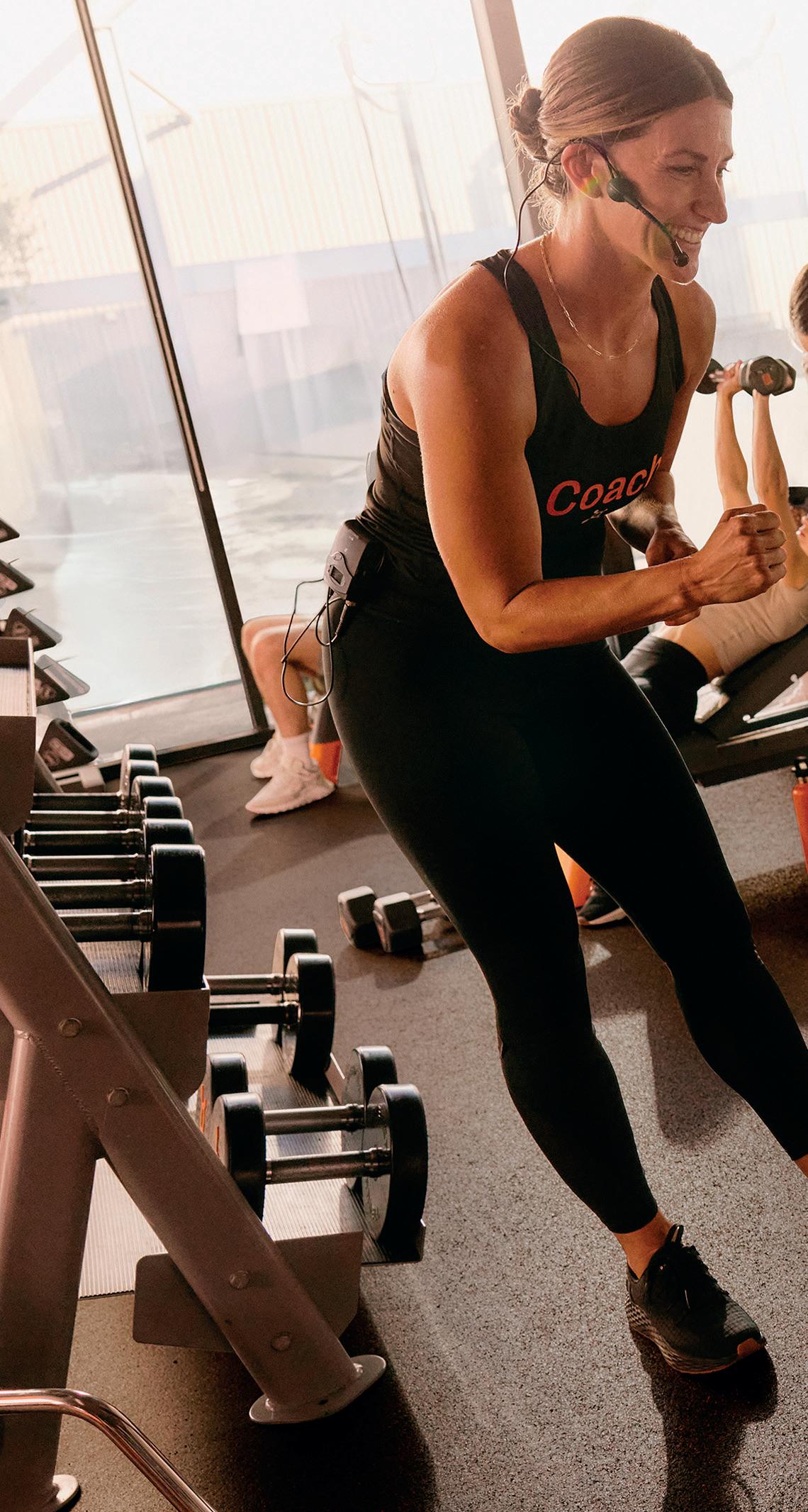
People are ageing, they’re stressed and struggling with their mental health and as a result they’re looking for evidence that exercise can help with these issues
to get to sleep – so there is not the temptation to scroll in the middle of the night, which does happen and is a really poor sleep habit.
The constant influx of information is really overwhelming to us as humans. We aren't designed to be able to carry that, so it's leading to chronic stress which can contribute to issues with quality sleep. We need to give ourselves time to detach from our phones.
A dark, cool environment can be helpful for better quality sleep, as is establishing a consistent night time routine. Doing these things consistently will bring about a difference pretty quickly.
What is the information overload from phones doing to our brains?
We don’t have the data yet, but I think we are likely to see a decline in brain health if individuals
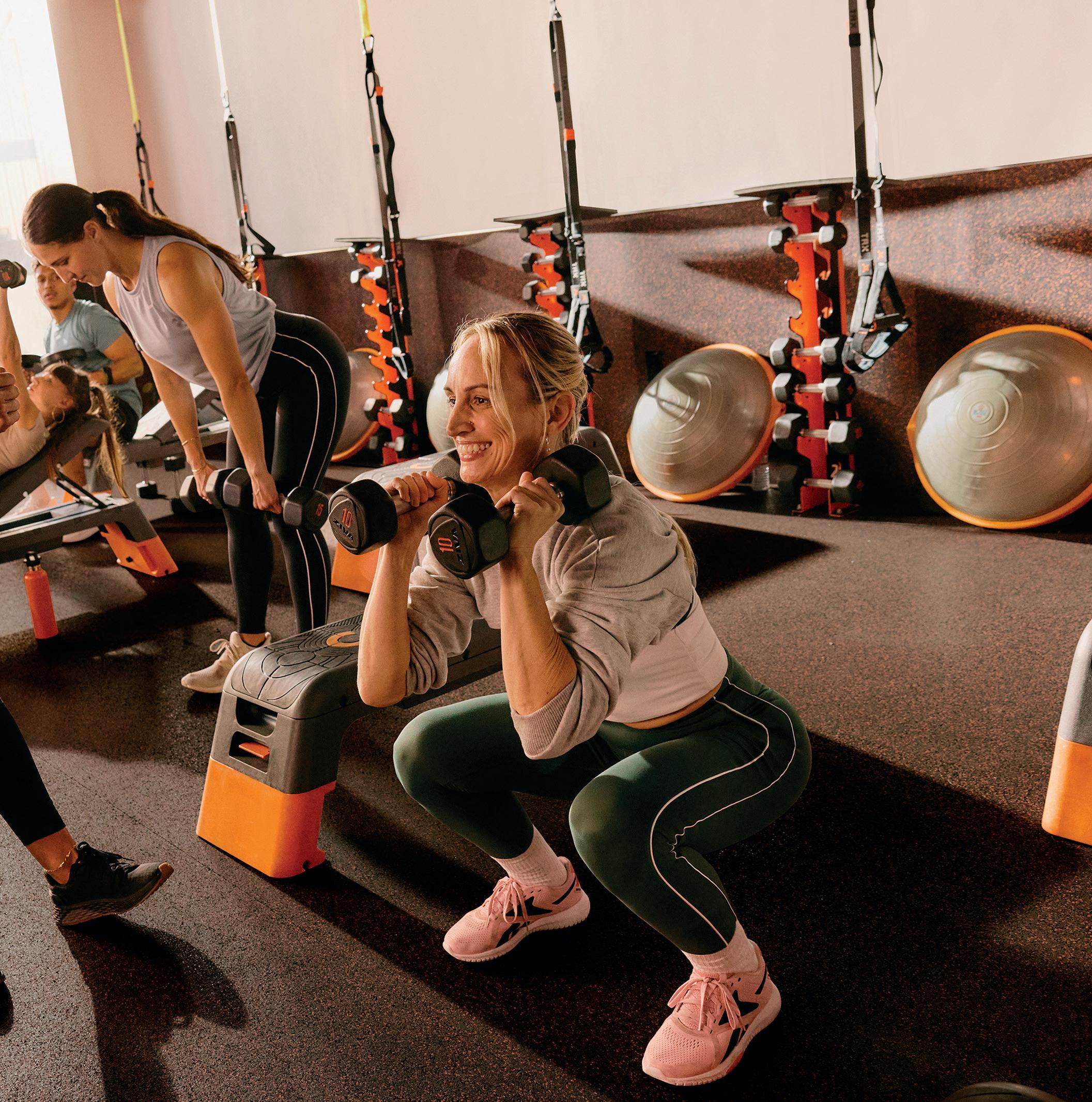
are not participating in counteractive measures, such as limiting screen time and managing stress.
By and large, what we consume on a regular basis impacts our thoughts, emotions and stress levels, which can impact things such as hormones, sleep and overall health. The good work done with exercise and nutrition can be undone by participating in things that increase stress.
Focusing on health and just being aware of it is a really powerful tool. Not every day is going to be perfect and sometimes we can't control stressful environments, but we do have the power to control how much we scroll on our phones, to take a walk and not to watch really traumatic TV shows.
It’s also important to be aware of how negative things impact us, so we start to become more discerning about what we engage in. Many young people feel their whole world is Snapchat
and Tiktok – they don't want to miss out on anything and want to be connected to their friends all the time. Many are also anxious and struggling with aspects of their mental health.
When I work with young people it’s astounding how well they respond to being separated from their phones. When someone else tells them to put their phone away they feel a sense of relief. At first they say they don't know what to do with their hands, but once they get past that, they say they feel amazing. They say their brains feel so much better, they feel free. I've had countless experiences like that, especially with girls.
One great thing about a group fitness class is not having phones and being immersed in the experience. We know our members crave the interactions and experience of a fitness studio, as well as the feeling of having done something really hard and accomplishing it.

We’re not just talking about physical strength anymore, we’re talking about sharper thinking, better memory, emotional resilience and living a longer, more vibrant life
Why does Orangetheory Fitness employ a brain expert?
Longevity planning is rightly gaining momentum, and I believe it’s because people are beginning to view wellness through a more complete, longevity-driven lens. We’re not just talking about physical strength anymore, we’re talking about sharper thinking, better memory, emotional resilience and living a longer, more vibrant life.
Today’s consumer wants more than just a workout – they’re seeking long-term support for how they feel, think and function. That’s exactly what our programming is designed

to deliver. Orangetheory’s combination of cardiovascular interval training and strength work drives physical results and supports cognitive performance by boosting memory, focus and neuroplasticity.
As wellness continues to evolve, we’re well-positioned to meet the demands of a more informed, longevity-minded member. While trends like nootropics and neurostimulation gain attention, we remain focused on what’s proven: movement is one of the most powerful tools for brain health. At Orangetheory, our priority is to translate science into accessible, effective experiences that benefit both body and mind. l



Hundreds
Create










•
Groups who find regular fitness less accessible are a key target
We don’t see this as a competitive market. The more of us there are helping people live longer and be healthier and happier, the better

May took over as CEO of Mytime Active in April this year


When it comes to health delivery, Mytime Active is knocking on new doors and tearing up the funding rulebook. Its new CEO speaks to Kate Cracknell
What’s your history with Mytime Active?
I started my career at Mytime Active 27 years ago – as a lifeguard and then GM – before moving to Freedom Leisure and then Woking Borough Council. But I was born and bred in Bromley. I learned to swim at Walnuts Leisure Centre in Orpington and spent a lot of my youth there. So Mytime Active has been an important part of my development, not only professionally but also personally. By 2024, I had done over four years at Woking Borough Council and had learned so much about the public sector. However, I was missing that direct link into leisure and the community. I saw a return to Mytime as a great opportunity to get back to what I truly loved doing. I joined as operations director last May, becoming CEO in April of this year.
Where does Mytime Active operate?
Mytime Active is a social enterprise that operates 19 sites across the UK, primarily in Bromley, but also through contracts with Birmingham City Council and New Forest District Council. We run a diverse range of services across the UK – including 11 golf courses, some with leisure provision – with a vision of improving wellbeing across our communities.
How important is fitness in your portfolio?
In total, we have six sites with gyms, but fitness is very important to our overall offering. Within the Bromley area, it remains the focus of what we do. We especially target the communities who find traditional fitness less accessible. For example, we
have a programme called Primetime for members aged over 60. It started with 79 members back in 2007. We now have over 3,500 Primetime members.
What makes Primetime so different is that it isn’t just a membership product for people over a certain age. That isn’t how we run it. It’s for over 60s, but we try to make it different. There’s Pilates, Zumba Gold, golf, line dancing, table tennis, tenpin bowling … but the real key is the social element, with coffee meet-ups, lunches and soirees where we get singers in and 150+ Primetime members in attendance.
We introduce all new Primetime members to a buddy – volunteers who’ve had dementia-friendly training and who are there to offer peer-topeer support. They’ll attend activities with the new members and stay afterwards for teas, coffees and biscuits. They’re absolutely integral to our business and making people feel part of a community, not just a member of a local gym.
Some of our younger team will often be around, too, and they’ll get involved, having cups of tea with the Primetime members. It creates a wonderful intergenerational approach across our facilities. We know the huge toll of loneliness on society and individuals. This is one of the ways we can help tackle it.
We do a huge amount of work in health. I know the sector as a whole is working towards this, but I’d say Mytime was an early adopter. For years now, we’ve engaged in a number of tendered health programmes, from managing a Wellbeing Hub on behalf of public health to our Active Lifestyles

Mytime Active ensures accessibility for all generations

programme. We also run Vital Five, offering health checks for things such as blood pressure.
All three programmes are paid for either by public health agencies or by integrated care boards. We work with our big local hospitals, too, delivering cardiac rehab programmes or pulmonary rehabilitation.
Where possible, I’d like us to be less reliant on tendered services. We spend a lot of time preparing, tendering and trying to gain financial support for a programme, creating something that’s really good but that only runs for a short time before funding runs out.
sdf
I feel we need to be a true partner to health and this requires building things with longevity and a long-term impact. Instead of Public Health England saying ‘we want someone to deliver this’, let’s identify the problems at source and work collaboratively with our public health teams and our health partners to come up with solutions.
Of course, the problem in leisure is that we often don’t have the right access to the right people,
We’re increasingly being recognised as part of a whole system approach, delivering health and wellbeing for our local communities
Fitness is still an important part of the overall leisure offering

which makes it hard to get anything off the ground. My experience at Woking has been invaluable in this respect. Our CEO was really innovative in his focus on health and he opened a lot of doors for me to run health programmes the likes of which I’d never have been able to run previously, as a leisure operator. Back then, I couldn’t even get a seat at the table to have the conversation.
During my time at Woking Borough Council, I learned how to get to places I couldn’t previously reach as a charity or a corporation. For example, I did some work with the North West Surrey Alliance, delivering physiotherapy in leisure centres: Ashford and St Peter’s Hospitals moved a large proportion of its physiotherapy team out of the hospital environment and into Woking Leisure Centre – and the outcomes, both for the NHS and for leisure, were very positive.
People were getting better quicker. We taught them their rehab exercises in a gym setting and gave them free gym access for the duration of their physio appointments, followed by a discounted health membership at the end to keep their rehabilitation
going. This also meant a huge increase in the number of people coming to the leisure centre, many of whom then stayed as members. It was a real win-win.
We rolled out lots of other sessions, too, including cardiac rehabilitation and surgical prehabilitation. These are the sorts of programme I would love to see Mytime Active deliver in partnership with our local integrated care boards.
What progress have you made so far?
It’s early days, but we’re starting to have conversations around how we can work together. We’re increasingly being recognised as part of a whole system approach, delivering health and wellbeing for our local communities, which is so important.
We’re also making good progress with our council partners. Before I went to Woking, I didn’t really appreciate that councils had specific teams working

on reducing antisocial behaviour in the borough, for example. I do now, so I can approach the council and ask to speak to the head of community safety. I can ask about their problems and how we can help.
As a result, we’re looking at replicating in Bromley something we did in Surrey: The Friday Night Project. I don’t want to do it independently of our partners; one of the things that made The Friday Night Project so successful in Woking and wider Surrey was the collaboration with partners. But crucially, I now know who those partners are and can work with the council to engage them – be that the head of police or local fire service. Having them come to the sessions really broadens the impact.
I also chair Pro-Active Bromley, where a lot of third sector organisations get together alongside public health. We’ve begun to discuss opportunities for collaboration. For example, public health might share data around areas of concern – issues of antisocial behaviour in certain parts of the borough or disproportionate numbers of children with obesity, for example – and collectively, we’ll discuss what we can do to help. Public health might not have the money available to commission a new scheme, but between us we might already be running something that’s doing 70 per cent of what’s really needed. We just might not be getting to the people public health needs

The wellbeing hub opened in June 2024, in a shopping centre offering programmes for smoking cessation, healthy weight classes, drug and alcohol rehab and mental health support
There are now over 3,500 Primetime (over 60s) members enjoying a range of activities
Mytime

us to. So, it’s over to public health agencies to open the doors and get us talking to the right people, so we can have the desired impact.
How will you fund your health work?
There are a few programmes we currently receive funding for, including our Active Lifestyles referrals scheme and Aqua Active, which allows Bromley families that have children with complex needs to come and use our pools.
However, we all know the NHS is under huge pressure and that public health budgets are being cut left, right and centre. We have to look at how we can work collaboratively, taking pressure off the health service without needing it to fund us.
If you look at the Woking physiotherapy initiative, for example, there was no cost to the leisure provider. It simply opened up space for the hospital team to deliver in the leisure centre. At most, there was an opportunity cost, giving up some space to the NHS –but that space hadn’t been used effectively for a long time and the benefit to the community was enormous. Mytime Active’s MyClub is another great example. A programme for adults with special educational needs, it started off as a funded scheme. However, we very quickly realised we could deliver a lot of it without funding.
The fact that it initially came through a funding channel gave us a really good foundation – showing us who we should to talk to, who to outreach with, who the carers were, who the different charities, groups and social services were that we needed to work with. It opened a lot of doors – and once those doors were open, we found that it was easy to carry on.
We now run a really successful club every week where the participants use a range of our leisure facilities, from group exercise classes to golf to tenpin bowling.
The cost to us is low when considering the outcomes that the programme achieves, meaning that we can deliver it over the long term without the need for external funding. And in the end, this is part of our vision.
It’s part of who we are as a social enterprise and an absolute no-brainer in terms of it being the right thing for us to do.

Tell us about your wellbeing hubs.

The physical wellbeing hub opened in June 2024, in a shopping centre in Bromley. On-site are lots of different healthcare professionals, as well as services such as a Citizens Advice Bureau. We run Vital Five from this hub, as well as programmes such as smoking cessation, healthy weight classes, drug and alcohol rehab and mental health support.
We also have virtual wellbeing hubs for Bromley and also for Birmingham. When people make contact with us, we triage them to identify the best access route into our facilities and services. For some that will be a traditional route into fitness, starting with a gym induction with health and nutrition advice; in Birmingham, it might be golf or wellbeing walks. However, if people have health concerns, we have a whole raft of programmes to support them, from healthy weight management to cardiac rehab, Escape Pain to Primetime and more.
We all know health is under huge pressure. We have to look at how we can work collaboratively, taking pressure off the health service without needing it to fund us
Pools are programmed to deliver for all age groups and abilities

Public health agencies might not have the money to commission new schemes, so it’s over to them to open doors and get us talking to the right people,
Do you have ambitions to grow?
We’re not trying to grow significantly and don’t have plans to start tendering against other operators for new contracts, however, we’re exploring ways to offer more within our existing geographies to even better support our existing local authority partners. In Bromley, for example, we’re already looking at how we can help schools develop their health and wellbeing programmes. We see a big opportunity there and we’d love to partner with them to do that. We’re passionate about Bromley, Birmingham and the New Forest and believe we can have a big impact in these areas, helping people live longer, happier, healthier lives. We’re working hard to make what we already have work really well. Fortunately, we won’t be significantly impacted by upcoming local government reorganisation. Bromley is already a unitary authority – as all London boroughs are. Birmingham City Council, as a city council, won’t go through any reorganisation. So
it’s only New Forest District Council that will be impacted. We’ll work with the teams there to ensure that whatever happens, we’re a strong partner.
What changes do you hope for in the sector?
For me, the headline word is collaboration. For a long time, this was a really competitive market. No-one was working together. Now, it really feels as though we’re starting to collaborate.
Mytime Active already speaks with the likes of Places Leisure, Everyone Active and a number of other trusts: Trafford Leisure, for example, recently asked for advice on launching a volunteer scheme which we were delighted to support. We’d be really happy to work alongside private operators too.
We don’t see this as a competitive market and we’re happy to share: the more of us there are helping people become healthier, happier and living longer, the better. If we can help, we absolutely will. l

Mytime Active has a thriving golf model which supports more people to get into nature and physical activity, as Steve May explains
There’s a misconception that golf is only for a certain type of person and a certain level of wealth. We’ve really tried to challenge that at Mytime Active, because golf has amazing benefits no matter who you are –what gender, ethnic minority or socioeconomic background.
We want as many people playing golf as possible. It’s outdoors. It’s in nature. It’s simply another form of exercise. Remove the traditional obstacles of high fees, dress code and strict rules and you remove the barriers to entry.
Also on offer is ‘pay and play’ from as little as £5.00 for a round of golf. We’ll lend people clubs. They can wear whatever they like.
We run a programme – Get Active in Golf – that’s a bit like an induction in the gym, getting people comfortable, showing them how to hold a club, giving

them the basics around the rules without ever insisting they’re rigidly adhered to. We just want people to get out there and have fun.
We also run great events to make golf even more inclusive. For example, we recently ran a Muslim Society day in Birmingham and we’re doing lots of work with older black men who feel golf isn’t for them; when they try it, they love it.
It’s important to work hard to get young people into golf, too, so
we offer discounted memberships to make it accessible. As a result, we’re seeing the most significant growth in participation among members aged 16–30 years.
We bring health into our golf clubs, too, with wellbeing walks at four of our 11 golf courses; we have nearly 4,000 people signed up to this programme so far. We also offer golf on GP referral. The individuals referred to us often have mental health concerns, but sometimes it might be physical – diabetes or weight issues, for example.
So often we hear people say: ‘The gym isn’t for me.’ Well, let’s find something that is for you. Golf is one of those things – and with the investments we’re making in gamification and driving ranges, we’re making it less weather-dependent and once people start exercising and feeling fitter, a new world of exercise opens up to them. l
reinforced
In 2021, the University of Southampton announced a £36m investment in sports and wellbeing at Southampton Sport, beginning with a major expansion of the Jubilee Sports and Recreation Centre. The upgraded facilities opened in September 2024 as students returned for the new academic year. Phillip Malatesta, head of sport and community services, explains how the project was shaped in collaboration with its users.
“Collaboration and inclusivity are at the heart of the university’s strategy,” says Malatesta. “But we all know the barriers to being active. Our vision for the Jubilee Centre was to create a destination of choice for students and the wider community.”
Southampton Sport offers a range of services to encourage participation, from scholarship programmes and community initiatives to the expanded Jubilee centre, which now features a stateof-the-art gym, 72 acres of outdoor space, 4G pitches and speed climbing facilities.
Throughout the process, Southampton Sport consulted a wide range of students about the layout, equipment and experiences that would encourage greater participation. The new Jubilee gym is twice the size of the previous one, with a streamlined digital experience and cutting-edge equipment from Technogym.
‘Active for all’ with accessible, inclusive equipment
Central to the extension was the choice of accessible and inclusive equipment. Technogym was selected as a partner for its strong reputation
in the university sports sector, the quality and variety of its equipment, and its digital capabilities.

The gym marks a significant step in the partnership between Southampton Sport and Technogym, featuring equipment that supports the university’s commitment to equality, diversity and inclusion (EDI) goals and accessibility. The partnership extends beyond equipment, with Technogym also providing staff training to ensure the full potential of the new kit is realised.
The previous facilities lacked community spaces where users could connect and develop the soft skills that often come through university sport. The new design addresses this, with natural light, greenery and sustainable materials aimed at improving mental wellbeing.

Technogym leads the way in digital innovation. The content on the cardio machines, the features in the app and the seamless connectivity create a modern experience
Phillip Malatesta, head of sport and community services, Southampton Sport
Responding to student feedback, there is now a much higher provision of strength-training equipment, and the cardio kit has been upgraded with digital content and programming.
The expanded gym space is zoned into areas for free weights, strength training (with Technogym Unity Mini Selection 900 equipment and additional half racks), cardio (featuring Excite Live and Skillrow) and functional training.
At the centre of the gym sits Technogym’s Kinesis One cable machine, chosen for its inclusive,

user-friendly design that accommodates a wide range of abilities, including users with disabilities.
Between the cardio and strength zones is a Technogym Outrace rig that forms the heart of the functional training area, serving also as a social hub for circuits and new fast classes.
Space-saving Technogym Universe cages –combining racks, multipower and cable machines – address growing interest in strength training.
A separate Technogym Group Cycle Connect studio has doubled the previous indoor cycling capacity, from 12 bikes to 24. The boutique-style space has been attracting attention during new member tours, thanks to digital content, atmospheric lighting and immersive audio. Classes will be offered both in-person and virtually to allow for flexible timetabling.
As part of the upgrade, Southampton Sport has started using Technogym's digital package, including the Mywellness platform. This integrated approach allows users to track their activity both in the centre and outdoors, while enabling staff to personalise communication and support.
“Technogym leads the way in digital innovation,” says Malatesta. “The content on the cardio machines, the features in the app and the seamless connectivity across the system create a modern experience. We’ve never had anything like it before – I’m excited to offer it to our users.”





Southampton Sport is committed to a joined-up approach to wellbeing. The new facilities will support the university’s student wellbeing service, inclusive and disability schemes, fitness ambassadors and local GP exercise referrals. Online feedback has been extremely positive ahead of the opening. “This is an amazing facility and nothing like we’ve ever had before,” says Malatesta. “Jubilee is more than a sports centre. It will offer students and the community a space to meet, build connections and enjoy the benefits of an active lifestyle.” ● More: www.technogym.com








Chuck Runyon and Dave Mortensen took a risk buying out a partner in the early days of Anytime Fitness. Runyon talks to Kath Hudson about how that led to him and Mortensen creating the company culture that turbocharged expansion

Anytime Fitness began in 2002 with myself, Dave Mortensen and a third partner. The three of us already ran two successful businesses together in the health and fitness space and we all had young kids. Our families were friends too, so we spent a lot of our time together, both at work and in our spare time.
The Anytime Fitness business started to scale in 2007 and 2008 and we soon realised we had different ideas on the way forward through that growth. At that point we were on the cusp of 1,000 locations around the world and had just signed a master franchise agreement for Australia. Although it was the great recession and the banking system was collapsing, it

was a great opportunity to find lease locations and negotiate with landlords, so we were growing faster. It was definitely a buyer’s market and there was a clear opportunity to keep reinvesting to provide services, products and support to our franchises to help them run successful studios. We took the support of our franchisees very seriously, because they are often investing their life savings, or risking their kids’ college fund. Unfortunately the tension started to trickle down – a common theme for so many startups as they begin to scale.
This friction started to weaken our culture, for the only time in our 22-year history, because there wasn’t alignment at the top. Dave and I wanted to keep investing in the business and our stakeholders, so in December 2009, we bought out our third partner. It was an emotionally difficult time to say goodbye to a long-term collaborator, as well as a huge financial risk. Dave and I had to
Our culture acts like gravity. It attracts good people and keeps them there
personally guarantee the loan and give away more equity during a risky global economic situation. We decided not to sell any of our shares, but to complete the buyout and double down. With young families – I have four kids and Dave has five – it felt like a huge risk. However, it brought the two of us closer together; we both felt as though we were locking arms for the long game. Although we knew the next few years were going to be challenging to pay back the high interest loan, we both felt blessed to have healthy kids and healthy families, so what really mattered was already solid. We also believed that if the business
went south, we would figure it out. For whatever reason, we do have a high amount of confidence in ourselves (probably too much at times), and we knew we’d be much stronger as a partnership.
Purpose, people, profits and play Dave and I then set out to become a best-in-class partnership and created a list of rules for the business.
Number one, that we were always serving something bigger than ourselves: we were serving the vision and the purpose of the company to grow, so we said we would never let our egos get in the way. The vision was bigger than either of us individually.
Number two, we’d always try to have healthy conflict, meaning we trusted each other enough to challenge each other’s ideas to make the idea better.
Number three, the stakeholders – our members and our franchisees – were served first. Providing our employees with incredible opportunities and an incredible culture for growth.

We also said we’d have a great deal of fun.
Those became the founding principles of the newly-structured company: purpose, people, profits and play. It cemented the vision in our minds, and every decision from then on has been run through that filter: Is it serving the organisation? Is it growing the brand? Does it help members?
This philosophy was the driving force behind the creation of Self Esteem Brands and the development of its seven brands. It also led us to a place where we could merge with Orangetheory to create Purpose Brands.
Dave and I have known each other for 35 years. There are not many friendships or partnerships that last that long
It took courage and confidence to sign that personal guarantee. If an event like COVID happened back then, we’d likely not be talking to HCM today, but we felt even stronger together after the buyout, because we were so aligned, which built confidence in our team.
We then had to work our butts off for the next two years to get to a place where we could refinance. As well as strengthening the partnership between Dave and me, it heightened our risk tolerance and showed belief in our team, the brand and where we were going.
We got a bit more savvy in the world of finance, private equity and lending and that led to even better



decisions in 2014, when we sold a minority percentage to Roark Capital. The company culture thrived: we were awarded the ‘best place to work’ in Minnesota a few years in a row and it helped us win the talent war. We could hire really smart people and empower them to unlock their potential to help drive the business. We have an incredible team and our culture acts like gravity. It attracts good people and keeps them there.
The merger with Orangetheory Fitness and the subsequent creation of Purpose Brands would never have happened if we didn’t have a shared purpose and shared values. Dave Long and his management team are also consumer- and franchisee-driven. They care about their employees. That’s what brought us together and that’s what’s going to keep us successful.
Fast forward to today: Dave Mortensen and I have moved back to be supportive board members at Purpose Brands, the new company formed by the merger with Orangetheory Fitness. Now our time together is spent on hobbies, such as golf and boating. Our kids are all grown up, but our families still have this bond. They saw the very modest beginnings and now they get to see where the brands are today –7,500 locations in 50 countries. We’re very proud of that and love those big numbers, which have come through thinking about one community at a time.
The merger with Orangetheory Fitness would never have happened if we didn’t have a shared purpose and shared values
Dave and I have known each other for 35 years. There are not many friendships or partnerships that last that long, especially when you mix the two together. And we’re deeply proud of ourselves for taking the risk and doing what was right for growth; it’s why we’re here today. l
It’s become the go-to model in the drive to improve access to physical activity for all, so is the place-based model working or does it need to evolve? Kath Hudson reports
Sport England started piloting place-based schemes and interventions in 2018, to find more sustainable ways to break down the barriers that stop people moving more and doing this in ways that are appropriate for each community. Rather than imposing one-size-fits-all solutions, the place-based approach builds trusted local partnerships and fosters community representation to create tailored interventions from the ground-up.
Sport England’s Place Partnerships is now investing resources and efforts in the communities experiencing the highest levels of inequality. More than £250m is being ploughed into 90 Place Partnerships across England – each area receiving support is in the top 10 per cent of the country for inactivity, social need, deprivation and health inequality. With location resulting in a difference in lifespan of up to nine years, and only 55.5 per cent of people in the most deprived areas being active – compared to 68.9 per cent of those living in the least deprived areas – a powerful intervention is needed. However, the place-based approach requires time, patient policy-making, dedicated resources and skilled workforces to build relationships and understand complex local contexts. Can the best results always be achieved by looking exclusively for solutions in each community? Would a greater cross-pollination of ideas across areas be more effective and would such an approach speed up results, or would it undermine them? We ask the experts…

Lisa Dodd-Mayne
director for place
England
We believe that when it comes to the needs and aspirations of a community, nobody will know this better than the brilliant, dedicated people who have made their lives there. By listening, collaborating and harnessing the enthusiasm and expertise at the heart of each community, we can build better places across England and support more people to be active. Our work involves making changes across a whole system, including Active Partnerships, local government, the health service, the community and voluntary sector, transport and housing sectors. Together, we work to understand the lived experience of that community and co-design

The
activities with the communities themselves. Partners are encouraged to find solutions that help people to move more – including changes to local policies across multiple sectors, as well as combining resources to create new opportunities.
This place-based approach is evolving all the time. We still don’t have all the answers and that’s OK. Every day we’re learning more about the ways in which we can work together to have the maximum impact in local communities. Sheffield Hallam University, as our national evaluation and learning partner, is helping us to really understand the impact of this work. We then share all those insights, best practice examples and learning at a national level alongside our local place partners.
This is a long-term shift in how we work – led by local voices, shaped by lived experience and focused on changing systems to ensure everyone has equal access to getting active. By investing deeply, listening carefully and working together, we’re transforming the conditions that enable opportunities to be active – a national movement, powered locally.

The goal is to ensure everyone has equal access to getting active
I believe that no single community can be expected to have all the answers
Ben Andrews
Communities must be in the driving seat if we’re to achieve any meaningful change. For too long people have been done to, rather than with, which has failed to deliver the outcomes needed.

However, over time, the true meaning of the place-based approach seems to have become distorted. Many interpret the approach as everything must come from within that one community from insights to finding and implementing solutions. From my experience, what often happens is that one issue – usually the most vocal concern in the room – gets prioritised, even if it’s not the greatest challenge the community faces.
No single community can be expected to have all the answers. The idea that every solution must come solely from local sources can be limiting, especially when there’s a lack of resources, capacity, or expertise there to address challenges. We need to recognise that national data, alongside local insights, can offer a valuable perspective on what works elsewhere and which solutions have already been tested and refined.
Rather than seeing this as a deviation from place-based principles, I believe this is part of an evolving understanding of how change happens. It’s about creating a framework where communities have the opportunity to partner with external experts, organisations and even other communities who have dealt with similar challenges.
This collaboration should be seen as an asset, not a threat to local ownership. Communities should be empowered to drive change, but they shouldn’t feel that they have to shoulder every challenge alone, especially when solutions already exist elsewhere and could be adapted to fit local needs.
When we focus on what will actually serve the community’s best interests, we open up a world of possibilities.


Communities usually know how things could be made better, if only they were asked
Martyn Allison Catalyst for change

Place-based working is still in its infancy and the more we encourage debate and discussion on how we tackle the deep-seated inequalities in activity the better.
For more than 40 years, our traditional approaches to encouraging some people to become more active have failed. Inequality now is much the same as it was when I first helped establish sports development in the early 1980s. We now understand that the reasons for exclusion are complex, are often different in different places and one size does not fit all.

to only the loud voices. When nothing changes as a result we further bake in the exclusion, along with a huge lack of trust.
Communities usually know how things could be made better, if only they were asked. But even consultation doesn’t always work because we do it in a way that still excludes, or we end up listening
Co-production – attempting to develop services with communities, rather than for them – is the best way of avoiding this scenario. This approach is prevalent in many of the Sport England Local Delivery Pilots and Street Games also uses this approach by engaging with locally trusted organisations who work with excluded communities. If some communities lack the capacity to engage with co-production, I think the solution is to build the capacity to engage better. Many community development organisations, such as the Active Wellbeing Society in Birmingham, have been successful in empowering communities to become more active citizens. This provides a real opportunity to finally turn the dial and work differently as a sector if we’re prepared to learn, share and collaborate better.

Jack Shakespeare Director of strategic projects
4Global
Effective use of data is key to unlocking the potential of the place-based approach. Data is not only a by-product of place-based working, but a vital lever to ensure that inclusive participation efforts are intentional, responsive and scalable. When harnessed strategically, data empowers both communities and systems to learn, adapt and sustain meaningful change. High-quality data allows stakeholders to identify where inequalities in participation exist, who is being excluded and why barriers persist. Disaggregated data – considering factors such as ethnicity, disability, gender, socioeconomic status and geography – enables targeted interventions that reflect the lived realities of communities. This allows delivery partners to make evidence-informed decisions about where to focus resources, how to design culturally-relevant programmes, and adapt delivery to maximise inclusion.

Data also plays a critical role in building accountability and trust: when communities see that insights gathered from their experiences are being used to shape services and measure progress, it strengthens local ownership and transparency. Aggregated insights from multiple place-based initiatives can highlight common patterns, systemic barriers and successful approaches that are transferable across regions. This shared intelligence helps national bodies, funders and policymakers to better align strategies, make informed investment decisions and advocate for structural change that supports long-term, equitable participation growth.
Investing in shared data infrastructure – including interoperable systems, common indicators and evaluation frameworks – helps cross-sector partners collaborate more effectively. As health, education and social care systems increasingly recognise the role of physical activity in delivering societal outcomes, the ability to demonstrate cross-cutting impact through integrated data becomes even more valuable.
Co-producing enables stakeholders to learn together

To improve place-based approaches, we must prioritise ongoing investment in learning
Rich Holmes MD
The place-based approach turns professionals into facilitators rather than deliverers of top-down solutions. The process is much more than consultation – it’s about co-producing decisions and letting communities take charge of shaping their own future. This shift can disrupt traditional procurement models and requires leaders to embrace uncertainty and relinquish control, welcoming the messiness of community-led change.

beyond their own context, via inspiration rather than imposing external solutions. These relational approaches take time, with action often delayed. While they are more sustainable, they don’t align neatly with election cycles or financial years, and the work tends to be underpaid, making it difficult to retain skilled people. This can lead to the approach being dismissed as ineffective.
Ultimately, place-based approaches are as much about investing in relationships that create the foundation for future collaboration rather than simply addressing immediate challenges.
Facilitators must strike a delicate balance between guiding change and ensuring communities don’t become stuck without progress. Sometimes, communities need to be connected to ideas
To improve place-based approaches, we must prioritise ongoing investment in learning; not through top-down evaluations, but by genuinely co-producing knowledge that enables stakeholders to learn together. This approach requires relational leadership and radical trust. We must invest in building relationships before they are needed, so when challenges arise, there is already a foundation of trust and collaboration. l



Orbit4 and GymNation have partnered to drive tech innovation into the heart of the businesses, transforming operations
In the ever-evolving world of fitness, efficiency and data are increasingly important to the success of gym operators and for the Middle East’s fastestgrowing fitness chain, this has meant embracing the latest digital solutions, optimising operations and empowering decision-making using Orbit4, a global leader in fitness facility asset management.
What began as a solution to streamline asset management has quickly become a cornerstone of GymNation’s broader digital transformation.
Since onboarding with Orbit4, GymNation has experienced many tangible improvements in the way its operational infrastructure functions –especially in the management of gym equipment and facilities and the resolution of service issues.
Operational excellence isn’t just about having the right equipment, it’s also about ensuring equipment is performing optimally, with minimal
Orbit4 has brought structure, data, and speed to areas of our business that were previously fragmented or reactive
William Rasmussen-Dean GymNation
disruption and with Orbit4’s platform, GymNation has gained unprecedented visibility of its asset base and increased its automation by integrating with external vendors, such as Matrix Fitness.
GymNation country director and co-founder, William Rasmussen-Dean, said: “From real-time service ticketing to maintenance schedules and lifecycle tracking, the entire process has become far more efficient. This has resulted in a noticeable reduction in downtime across GymNation facilities.
“Faulty equipment and facility issues can now be flagged by staff and tracked through to resolution, eliminating manual processes and reducing delays.”
Orbit4’s platform and mobile app not only provide transparency, but also ensure accountability, because every issue raised has a clear owner and resolution path.

A key factor in the success of this rollout has been the strong engagement of GymNation staff at every level of the organisation. From senior management to frontline team members, everyone has embraced the Orbit4 system with enthusiasm. Management teams are particularly appreciative of the data-driven insights. Usage trends, service history, product maturity and equipment performance data are no longer fragmented or buried in spreadsheets, they’re centralised, actionable, and ready to inform strategic decisions.
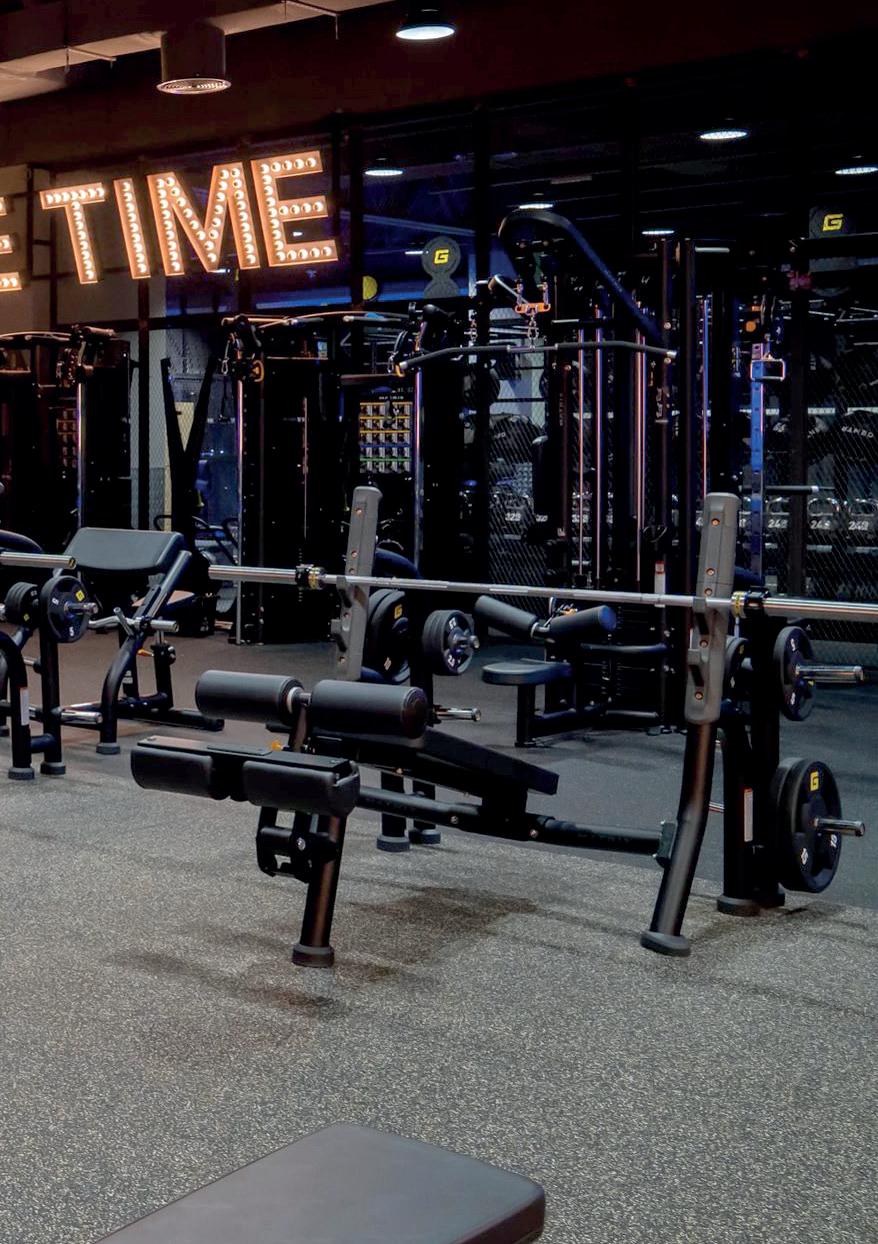
Site-level staff have found the Orbit4 platform intuitive and easy to use. The ability to log service issues in real-time, monitor the status of tickets, and ensure their members are getting the best experience has improved morale and enhanced operational discipline.
GymNation’s adoption of Orbit4 is part of a larger digital strategy that’s setting them apart in the fitness industry. Already recognised for their techforward approach, GymNation has made significant investments in systems that enhance both back-end operations and front-end member engagement.
Orbit4 fits seamlessly into this ecosystem, as the platform’s digital-first design aligns with GymNation’s goal of eliminating paper-based processes and outdated manual workflows.
According to the team, implementing Orbit4 was not only logical but necessary, as they continue to scale operations and raise the bar on the customer experience.
“Orbit4 has brought structure, data, and speed to areas of our business that were previously fragmented or reactive,” says William Rasmussen-Dean, from GymNation. “It’s helped us future-proof our operations in a way that aligns with our long-term vision. Orbit4 is propelling GymNation into a new league of digital maturity. Whether it’s personalised member communication, predictive maintenance scheduling,


or real-time operational dashboards, GymNation is leading the charge in what a modern, techpowered gym chain can and should look like.”
GymNation’s blueprint for success
GymNation’s progress serves as a blueprint for the wider industry, showing that digital transformation isn’t just about adopting new tools, it’s about fundamentally rethinking how the business operates.
As GymNation continues to grow its footprint and invest in its infrastructure, partners such as Orbit4 will remain central to its strategy. With each new facility and member, the importance of operational efficiency, service reliability, and data-driven planning grows exponentially.
The partnership between GymNation and Orbit4 is a testament to what can happen when a forwardthinking operator meets a platform purpose-built for the industry’s unique challenges. It’s not just about fixing broken machines faster, it’s about building a smarter, more resilient business.
For other operators watching GymNation’s journey, the message is clear: the future of fitness management tech is Orbit4. More: www.orbit4.com


The way many traditional public leisure services are delivered remains outdated, fragmented and disconnected from broader health and wellbeing goals

Duncan Wood-Allum explores how the public leisure sector can pivot into a sustainable model focused on active wellbeing in the upcoming local government reorganisation

Since 2020, the public leisure, sport, and physical activity sector has faced three major challenges: rising utility prices, higher National Insurance contributions and COVID-19. These shocks have tested the resilience of local authorities and their operating partners. More recently, spiralling construction costs have reduced potential returns on investment from renewing facilities and when you add in workforce recruitment and retention challenges, the sector has been seriously challenged. Despite this, recent years have seen a bounce-back in usage and financial performance, helping many operators stay afloat. Larger operators with economies of scale and those using cost-saving models (such as the VAT-efficient Agency Model) have fared better, but the fundamental problem remains: according to Sport England’s Active Lives survey, levels of participation in physical activity have barely improved – especially among inactive groups – and so stubborn inequalities persist.

Sport England has invested £250m in its Place Expansion initiative under the Uniting the Movement Strategy and while this is gathering momentum for the 100 or so places awarded, it pales in comparison when it comes to the broader £1bn spent annually across the UK on public sector leisure – including open spaces, pitches, community and indoor facilities. So why hasn’t this investment sparked more significant change? I believe a major factor is the way many services are structured and delivered, as this is often outdated, fragmented and disconnected from broader health and wellbeing ambitions.
Enter local government reorganisation
Local government reorganisation will see multiple local authorities merge into larger entities over the next four years, removing district and borough councils.
This process has been designed to decentralise power, streamline bureaucracy and better align services such as health and social care.
The

When seeking to predict the impact of such fundamental change, a critical question arises: is this the end of traditional leisure services, or a once-in-a-generation chance to reinvent them? If mishandled, local government reorganisation could lead to mismanagement, neglected facilities or even service loss. Portfolios of inherited leisure assets could end up being the responsibility of new unitary authorities in a bizarre game of ‘pass the overly complex parcel’. With the risk of a vacuum of leadership in these new organisations, there’s the potential for the future to be challenging, however, let’s not dwell on this, none of us is interested in seeing an erosion of services and physical activity participation levels – particularly amongst those who are less active or inactive.
On a more positive note, local government reorganisation offers a unique opportunity to reimagine the sector as delivering an active wellbeing service that is inclusive, sustainable and aligned with local health priorities.
There are three compelling opportunities for public leisure services to transform into an active wellbeing service through the catalyst of local government reorganisation. These can be framed at local political level and executive level, where the real influence sits.
Firstly, we have the opportunity to create an active wellbeing service, secondly, to fund this from existing resources and thirdly, to increase participation levels, particularly among less active populations.
With the right commercial and place-based mindset, active wellbeing services can be both self-funding and socially impactful
With the renewed focus on addressing health inequalities and social care, traditional leisure services are unlikely to be seen as a core service.
The idea of reimagining leisure services, adapting and pivoting them to become active wellbeing services is gaining real traction across the country.
In our work at SLC, at the vanguard of this pivot – alongside other progressive organisations – we’re finding it gets real support from elected members and system partners in health and adult social care, as well as the voluntary sector.
Active wellbeing services go way beyond health club and gym memberships and swimming pools. They’re integrated, collaborative systems designed to support community health through physical activity.
While there’s ‘no one size fits all’ solution, an active wellbeing service is likely to have some or all of the following elements: Key components could include:
■ A commissioning team to coordinate across health and leisure sectors.
■ Data and insight functions to support the co-design of services.
■ Commercial leisure activities that generate income.
■ Integration with adult social care to support independent living.
■ Allied health professionals working alongside leisure staff.
■ Influence over local planning to embed active design and support more active communities.

■ A programme to support workforce transformation, to better support people with complex health needs.
■ Outreach and enabling support to schools, clubs and voluntary groups.
■ Strong programming and communications to activate local spaces and coordinate local resources. This service would be outward-facing, enabling place-based working and featuring the delivery of commercial and inclusive facility-based provision, outreach and community engagement. It would be embedded, serving as a key delivery partner across multiple functions of the new local authority.
Financial sustainability is key
One thing is clear, future services must be financially sustainable. Reliance on health sector funding, while ideal in theory, is not realistic in the short-term. Instead, economies of scale will be essential.
In our experience, the merging of multiple councils’ leisure services can generate significant savings – up to £1.5 million-plus annually for a single authority. If scaled across larger new authorities, surpluses of £3-5 million per year are possible. These funds could be reinvested in outreach, health and social care alignment and addressing inequalities in participation.
There’s still a need to support operators in better understanding the potential of combining these roles and working more collaboratively. Encouragingly, we’re already seeing some of these behaviours through the partnerships we’ve supported in places such as Sheffield and Northumberland.
The pivot towards active wellbeing is an opportunity for radical change

With the right commercial and place-based mindset, active wellbeing services can be both self-funding and socially impactful. Active wellbeing services will need to generate the value themselves, combining an unapologetically commercial focus with a place-based and wider systems mindset.
the participation gap
Despite billions invested, physical activity levels haven’t significantly improved, particularly among the least active populations. The collective potential of public and private sector leisure, facilities, pitches, parks and community spaces remains largely untapped. Addressing it is within our gift through designing this collaborative approach into governance, learning and workforce
development, service models and organisational cultures, partnerships and specifications.
We suggest a stronger focus on:
■ Targeted investment into inclusive, revenue-generating activities.
■ Planning policy that supports active design and play.
■ Better data, monitoring and evaluation, using tools such as the Wellby social value measure.
■ Optimising local networks and infrastructure.
■ Reinvesting in sports development, particularly for young people.
■ Supporting voluntary and grassroots organisations.
■ Cultural changes that embed activity into public services, such as workplace wellness.
These steps can bridge the participation gap if backed by leadership, collaboration and a clear strategy.
Local government reorganisation will radically change delivery

So what should local authorities be doing now?
Some councils are already on this journey, but all local authorities – especially those forming new unitary authorities – need to act now.
Key steps
1. Create an active wellbeing commissioning function: this team should influence strategy, connect with political leaders and link across public health, adult care, planning and more.
2. Develop a compelling, co-produced vision: show how active wellbeing improves lives and supports local priorities.
3. Influence and secure a seat of influence in the shadow unitary authority and seek to shape thinking around active wellbeing.
4. Protect local knowledge and memory: staff changes during reorganisation can lead to lost insights, so document and share what works.
5. Audit your assets: know what services and facilities you’ll inherit and assess their suitability.
6. Map local networks: identify potential partners and build collaborative plans.
7. Get involved early: position public leisure assets and your active wellbeing service at the centre of shadow authority discussions.
Hold onto your hats because this is not going to be a smooth transition
Hold onto your hats because this is not going to be a smooth transition.
It’s time to harness the collective potential of our existing assets, services and partnerships. The future is bright for those prepared to step forward to embrace and shape the opportunity that local government reorganisation presents.
Is this the end of public leisure services as we know it? Yes, but active wellbeing is our collective future – let’s win the argument for sustainable active wellbeing and then get on and deliver it.
Duncan Wood-Allum is MD of SLC www.slc.uk.com
Representing the next generation of hosted buyer events, designed to bring together like-minded leaders in the club and fitness industry through scheduled meetings, interactive education sessions, and purpose-driven networking experiences.


Connecting suppliers with buyers representing North America.
September 21-24 • Four Seasons Hotel Westlake Village, California
Nestled in the Santa Monica Mountains, Four Seasons Westlake Village offers a serene luxury five-star retreat with a world-class spa, gourmet dining, and beautiful gardens, perfect for both leisure and business.
Connecting suppliers with buyers representing Europe and The Middle East.
October 14-17 • Higuerón Hotel Malaga, Spain
Higuerón Hotel Curio Collection by Hilton is a five-star luxury hotel on the Costa del Sol, offering stunning Mediterranean views and a blend of contemporary design with local culture. Contact Our Team Today!
info@weworkwellevents.com www.weworkwellevents.com

We’ll achieve our goals by harnessing a huge crosssocietal energy on prevention
Wes Streeting, secretary of state for health and social care


The much anticipated Fit for the Future: 10 Year Health Plan for England reveals ambitious targets to create a new way of delivering health, says Kath Hudson
Although Fit for the Future , the UK government’s new 10-year health strategy, contains no mention of gyms, leisure centres, health clubs, wellness, exercise, fitness, sport, physical activity or workplace wellness, there are nonetheless changes announced which will create opportunities for the sector, should it choose to take them – such as paid-for-result support in the implementation of weight loss drugs and partnerships with new Neighbourhood Health Centres.
The hotly-anticipated policy paper highlights a pivot to prevention as one of three pillars, along with moving treatment from hospital to community and moving from analogue to digital.
The prevention focus appears to be mainly underpinned by various technologies: data, AI, genomics, wearables and robotics, in

The government will negotiate new partnerships with industry to provide access to obesity treatments on a ‘pay or impact on health outcomes’ basis
addition to the focus on the development of the neighbourhood health centres.
“More care will be available on your doorstep and from the comfort of your own home. It will be easier to see a GP and Neighbourhood Health Centres will be available in every community,” it reads.
Beginning with places where healthy life expectancy is lowest, these centres will be a ‘one stop shop’ for patient care and the place from which multidisciplinary teams operate. They will be open at least 12 hours a day, and six days a week.
The government is expecting people to be more involved with their own health and self care and this will include making more healthy choices. The report says the new vision will “encourage citizens to play their part, including through a new health reward scheme to incentivise healthier choices”.
This may be referring to the ‘Better Health Rewards’ pilot which has been running quietly in Wolverhampton for some years now, but this has not yet been confirmed.
The plan includes a commitment to work with Brendan Foster’s Great Run Company to set up a campaign to motivate millions to run more on a regular basis.
More than a quarter of the UK population have a long-term health condition and they now account for 65 per cent of NHS spending. “The NHS today is no longer just a safety net to help people in crisis,” says the report, “it must provide a continuous service for those who have a chronic illness. The challenge is to shift from a model of care that is episodic and disempowering, to one that is continuous and empowering. The opportunity is to enable patients to exercise greater control over both their health and their care.”

In the longer-term, the report says there will be a move to a new NHS financial model, where money will increasingly follow patients through their lifetime. “Providers will be rewarded based on how well they improve outcomes for each individual, as well as how well they involve people in the design of their care’” it says, “not solely on whether they provide episodic instances of care on demand.”
People are living too long in ill health, with the gap in healthy life expectancy between rich and poor growing – nearly 20 per cent of children leave primary school with obesity. “Our overall goal is to halve the gap in healthy life expectancy between the richest and poorest regions, while increasing it
for everyone and to raise the healthiest generation of children ever,” says the report. “This will boost our health, but also ensure the future sustainability of the NHS and support economic growth.”
Partnership working is given a great deal of prominence in the report, which says: “We’ll achieve our goals by harnessing a huge cross-societal energy on prevention. We’ll work with businesses, employers, investors, local authorities and mayors to create a healthier country together.”
Genomics will receive hefty investment to predict disease, personalise treatment and address health inequalities. For example, a newborn genome sequencing programme will be introduced to detect more than 200 rare conditions in babies.
Wearables will become standard in preventative, chronic and post-acute NHS treatment by 2035.
Obesity will be tackled via broader access to medications, however, there is no mention of the importance of exercise in delivering these interventions safely, nor the potentially catastrophic outcomes of not doing so. The government says it will negotiate new partnerships with industry

The industry may have an opportunity to deliver health outcomes for cash
More than a quarter of the population have a long-term condition

to provide access to obesity treatments on a ‘pay for impact on health outcomes’ basis, opening up opportunities for the fitness, health and wellness sector to deliver health outcomes for cash.
There will be some pressure on the food industry, with mandatory health food sales reporting for all large companies and the data will be used to set new mandatory targets on the healthiness of sales, although the detail of this scheme was not explained.
Junk food advertising aimed at children will be restricted and the soft drinks industry levy will be reformed to encourage reformulations.
Access to free school meals will be expanded, with higher nutrition standards set, giving access to healthier food.
With vaping among 11- to 15-year-olds doubling over the last five years, there will be a ban on advertising and sponsorship of vape and other nicotine products.
Children turning 16 this year (or younger) can never legally be sold tobacco and the introduction of the Tobacco and Vapes Bill will push for a smoking-free generation.
There will also generally be a greater focus on smoking cessation, especially for pregnant women and those with smoking-related conditions. New standards will be introduced for alcohol labelling and the no and low-alcohol market will be supported.
Immunisation programmes are also part of the prevention agenda, with improved access


Neighbourhood Health Centres will be a ‘one stop shop’ for patient care and the place from which multidisciplinary teams operate

via pharmacies and the introduction of new vaccination programmes. The government has ambitions to eliminate cervical cancer by 2040.
Screening for diseases will be broadened, especially for those with risk factors, such as a history of smoking.
The mental health of young people will be supported via Young Futures Hubs, which will provide support teams in schools and colleges.






A 50 per cent cut in funding to the centre will see this money going into prevention.
Three pillars will be: pivot to prevention, moving treatment from hospital to community; moving from analogue to digital.
Citizens will be encouraged to be more responsible for their own self-care. Screening will be broadened to prevent disease developing.
A Better Health Rewards scheme will incentivise healthy choices.
The NHS App will become a “doctor in the pocket”, giving advice and access to health records, enabling booking of tests and vaccines and consultations.

Neighbourhood Health Centres, possibly created through PPP, will be open 12 hours a day, six days a week, supporting health in the community
A tie up with Brendan Foster’s Great Run Company will aim to get more people running.
School meals will be improved and junk food advertising restricted.
Young Futures Hubs will support mental health in the young.
People 16 and younger will never be able to buy tobacco legally.

The sugar levy will be updated to encourage reformulations.
Immunisation programmes will be extended.



Young Future Hubs will support the mental health of young people


The government is expecting people to be more involved with their own health and self care and this will include making more healthy choices
By 2035 most non-emergency care will happen outside hospitals, relieving pressure on acute services. In the shift from hospital to community, thousands more GPs will be trained and 2,000 more nurse apprenticeships created in the next three years.
The Neighbourhood Health Service will focus around Neighbourhood Health Centres, which might be formed via public-private partnerships and hold potential for sector involvement by leisure centres and health clubs. The NHS App will become a “doctor in the pocket”, giving advice, access to health records and allowing people to book tests and vaccines, have a consultation and manage a long-term condition. This is part of the drive to involve people in their own care.
The government says the set of reforms will reimagine the NHS into a world-leading healthcare system, underpinned by science and technology, which will tackle inequalities, predict and prevent ill health and be an engine of economic growth by getting people fit for work. It will stay true to its founding principles of providing universal care, free at the point of delivery.
The NHS accounts for 38 per cent of government spending, projected to rise to 40 per cent

by the end of this Parliament and the plan is backed by an additional £30bn expenditure.
However, the government has warned that the era of “more money, never reform” is over and there will have to be better outcomes for the money spent. The report says spending ‘at the centre’ of the NHS will reduce by 50 per cent by 2027, with the resources diverted to community action.
Around 200 health organisations will be disbanded as part of the overhaul of the system, with NHS England among them.
We can be confident that once the health service has been through its pivot to prevention, it will be far more open to working with the physical activity sector
Liz Terry, editor, HCM
Seeing the UK government acknowledge the power of prevention so wholeheartedly makes this a huge moment for everyone who has lobbied for this change for so many decades. The case for treating the cause and not the symptoms and also for early intervention has been thoroughly understood and acted upon, and we absolutely applaud this important change of direction.



This would not have been possible without the many years of lobbying by the wellness and health sector going right back to the 1920s and we salute everyone who has been involved with this labour of love over so many decades.
While it’s frustrating to discover that the report – which will direct the spending the best part of half of all government funds each year – does not foresee an immediate and direct role for the fitness, health and wellness sectors, nevertheless, there are opportunities to be had when it comes to collaboration, such as the delivery of weight loss and Type 2 diabetes interventions and support for Neighborhood Health Centres.
We can also be very confident that, once the health service has been through its pivot to prevention, it will be far more open to working with us and developing meaningful partnerships. We need to be patient, keep producing powerful evidence of the efficacy of our interventions and continue to nurture partnerships. Change will come in time – probably sooner than we think due to financial pressure.



The UK government has followed Fit for the Future with more announcements
Following the publication of Fit for the Future the UK government has announced further NHS reforms and support for physical activity in the form of a new Plan for Change , which is designed to support people in getting back to work.
With 2.8 million signed off because of poor health, the sick note culture is costly for individuals, the NHS and the economy as a whole.
In a win for the UK health and fitness industry, health secretary, Wes Streeting, has said doctors should consider referring people to health clubs and gyms, rather than writing sick notes.
Last year, the NHS issued more than 11 million sick notes, and 93 per cent of them simply declared people “not fit for work” with no alternative option or plan to help them find a job or stay in work.
The most common reasons for longterm sickness absence are mental health conditions such as anxiety and depression and musculoskeletal disorders such as back pain.
Referrals will be made by WorkWell centres. Fifteen are being piloted – each backed by £100,000 – employing specialist professionals, such as occupational therapists and social prescribers, who can work with people to support them back into work. In addition to gym prescriptions, career coaching and access to debt management have been proposed.
Health professionals, such as physiotherapists, will be able to write sick notes to free up GP time.
Evidence from the pilot will be used to inform the government’s wider approach to work, health and skills. It’s expected to help 56,000 disabled people and people with health conditions back into work by spring 2026.
Fifteen English regions are included in the pilot from Lancashire to the Isles of Scilly.

Joe Wicks has received funding for his new kids’ exercise programming
The UK government has also got behind Joe Wicks’ latest initiative – Activate – a new animated series of five minute workouts for kids.
Wicks – the PT who became a household name in lockdown for his PE with Joe online family workouts – has collaborated with BAFTAaward winning Studio AKA, of Hey Duggee fame, on his latest campaign to get kids active.
The first five-minute workout in the animated series is now available on YouTube, with more being released over the school holidays. Wicks appears as an avatar, squatting and star jumping with five “Activators,” to music supplied by Universal Music UK.


The UK government has now said it will fund a further 10 episodes and in a show of support Health Secretary, Wes Streeting, joined Wicks for the official launch at Ripple Primary School in Barking, east London.
Wicks says: “Activate is the natural next step in everything I’ve worked towards over the past decade. From my early YouTube workouts, to PE with Joe during the pandemic, my goal has always been to get children moving and feeling good – physically and mentally.
“This project brings together everything I’m most passionate about and everything I’ve learned on my journey – going back to my own childhood where I discovered movement as a way to cope with the challenges of living with parents with drug addiction and mental health issues.”
Obesity rates have doubled since the 1990s, and now cost the NHS £11.4 billion a year. A forthcoming report by the chief medical officer will show that more than one in five children are living with obesity by the time they leave primary school, rising to almost one in three in areas with higher levels of poverty and deprivation.
“Childhood obesity robs our young people of their future, and inactivity is one of the biggest culprits. That’s why it’s crucial to start building healthy habits from a young age,” said Streeting. ●

It’s crucial to start building healthy habits from a young age
PureGym has scaled from 35 to 650+ clubs while using Exerp

Software suppliers tell Julie Cramer how their tech developments are enhancing the member experience and benefiting day-to-day club operations

Exerp software enables automated 24-hour club access

















Our new AI chatbot will enable sta to service members with just voice interaction
Joe Nicholas Exerp



Since migrating to Exerp 2013, PureGym has been in a period of hypergrowth. Exerp has provided the operator with enhanced capabilities, including offering fullyautomated, 24-hour access to clubs and moved billing in-house, recouping bounce fees. It has also enabled advanced campaign management capabilities, membership add-ons and member self-service.
Exerp has supported the company in scaling from 35 to 650+ clubs, while also acquiring three more fitness chains and expanding into Denmark, Switzerland, the US and UAE. Revenue growth has followed, rising from £69m to £480m. Future expansion plans include a franchise model for Saudi Arabia and the US.


Exerp focuses on enterprise clients, supporting a variety of operators, from Pure Gym globally to Life Time and Chelsea Piers in the USA.
Tell us about your new features
We recently launched Exerp Go, which is a fully web-based Point of Sale solution that can be operated anywhere with just a phone, ipad or till, on- or off-site.
Staff are no longer strapped to a desk allowing them to move freely for powerful social interaction and secondary sales opportunities.
Is your software AI-enabled?
We’re launching our new AI chatbot to enable staff to service the member with just voice interaction and out systems are fully cloud-based. More: www.exerp.com




Xplor Gym is designed for gym and fitness clubs of all sizes. We offer all-in-one gym management software that’s flexible and future-ready with everything operators need to succeed.
Tell us about your new features

A new feature is the Xplor Active member app. Suiting different budgets, this is available with standard or custom branding. Members can manage memberships, book classes and receive updates – creating a better member experience, while clubs can use dynamic QR codes for secure access and visit tracking. Operators can drive additional recurring revenue by offering classes and courses on a membership basis. Great for formats such as Pilates, members are automatically booked into each session and payment is automatically collected.
Xplor software is built on API-first technology that makes integrations easy

We’ve also improved our prospecting tools to help clubs identify and target abandoned signups to maximise sales.
Is your software AI-enabled?
Xplor Gym is built on API-first technology that makes integrations easy, so operators can take advantage of AI innovations to create a customised solution that suits their business needs.
Tell us about the tech
It’s cloud-based, so operators can access the tools they need from anywhere. To support unmanned access and also access during local internet outages, we offer on-site hardware for access control.
More: www.xplorgym.co.uk


BigBox Huddersfield is a large destination club that opened in 2024. Our software is used for almost everything, creating a seamless member experience. Prospecting and automated communication tools have helped BigBox achieve impressive growth – winning 500-plus new members each month after opening – tracking this growth was easy with the in-built dashboards. The operator has a wealth of live data and analytics with which to make fast, informed decisions. This success encouraged the owner to introduce Xplor Gym at two more sites. Targeting differing demographics, these operate under unique brand identities and alternative configurations –highlighting the flexibility of the solution.









Nerio Alessandri Technogym
Technogym’s MyWellness platform empowers clubs to deliver personalised, datadriven experiences that drive results, boost retention and streamline operations across fitness, wellness, rehabilitation, performance.




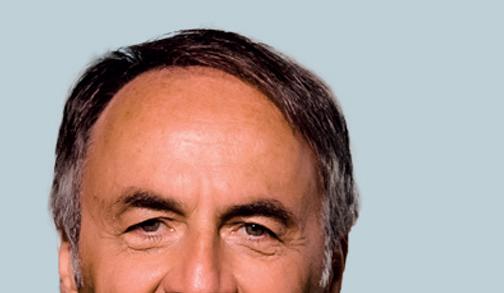

MyWellness is in 30,000 clubs worldwide and has 40 million registered users.
Tell us about your new features
Technogym’s Automated Journeys function allows operators to deliver highly-tailored member pathways – from onboarding and training to
Automated Journeys provide actionable insights and personalise training experiences


retention – using intelligent, pre-built digital workflows. These tools have significantly enhanced personalisation at scale, enabling clubs to better understand and serve their members.
Journeys can be built seamlessly with or without Technogym equipment.
Is your software AI-enabled?
MyWellness uses our AI ‘Technogym Coach’ to power Automated Journeys, provide actionable insights from Technogym Check Up* and personalise training experiences based on member data and behaviour.
This enables clubs to automate engagement, optimise operations and deliver intelligent, results-driven services that scale, without losing the personal touch.
MyWellness is a cloud-based platform accessible from any device, seamlessly integrating with Technogym equipment and third-party systems.



Breedon Priory Health Club has partnered with Technogym for the use of its fitness equipment and digital ecosystem since opening.
*Technogym Check-up is an assessment tool that gives a Wellness Age across measures of wellbeing. More: www.technogym.com

In 2024, Breedon Priory decided to replace the club’s gym management software, choosing Xplor Gym in part due to its seamless integration with the Technogym Mywellness CEM. Members were placed into the Xplor Gym system before it went live, giving the club time to train team members and the integration has made operations easier, improving the member journey from initial enquiry to in-club visits and streamlining the business.




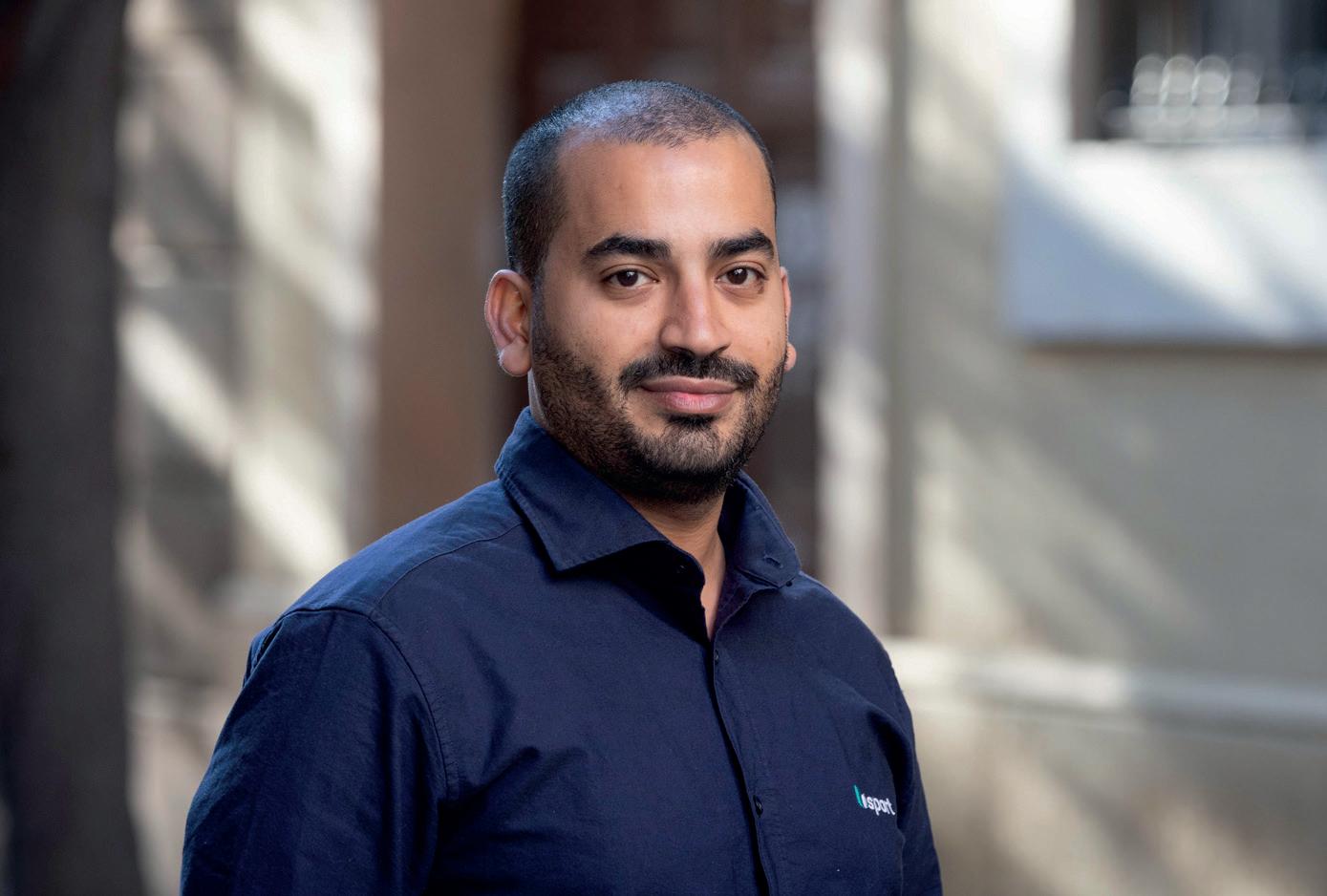
BSport empowers boutique fitness studios to effectively manage and grow their businesses with modern tools and features all in one place – acting as a true partner in their success.
Tell us about your new features
One-Click booking is our newest feature that removes all barriers from the booking process and routes clients to class and pack purchases within seconds.
We know how powerful word of mouth is and with the member referral link feature, operators can measure and reward their most loyal members. Used as a quick way to both grow and retain, the referral link directly engages in exciting ways.
Is your software AI-enabled?
BSport’s plans in 2025 include incorporating AI in the form of intelligent agents and generative AI to create smarter, effective studio management.
A recent update to BSport’s marketing tools is CoachMail – an AI-powered email editor that enables users to create beautiful, captivating campaigns in no time with AI that handles copywriting, photos and more with ease.
Tell us about the tech
BSport offers an entirely cloud-based software, accessible anytime, anywhere. With provider AWS, BSport runs on the largest and one of the most trusted cloud infrastructure providers globally. Our servers are located in Europe, giving our UK partners the benefit of reliability, smoother client experience and lower latency.




We know how powerful word of mouth can be, so we launched the member referral link feature
How about future plans?
The recent addition of a London office demonstrates our commitment to further developing our presence in the UK, alongside our offices in Barcelona, Paris and Berlin. Our team is growing, with the goal of creating a larger network of operators while maintaining the premium level of support our partners expect. More: www.bsport.io



One partner who has been able to optimise everything BSport has to offer is Onyx London, which has been able to treble its revenue over the four years it has been working with the company. The multi-activity studio has been able to keep clients loyal thanks to the custom app and widgets. Onyx’s members can easily book into classes, with a seamless user journey for every purchase. Member retention is achieved instantaneously, with automated communication via SMS, email and push notification, all based on their synchronised data in which member behaviour is effectively tagged in smartlists.
We’ve added the ability to award digital badges for app behaviours, which contributes to motivation and retention
In
there were 625,000 bookings
We provide an all-in-one member app, a fully-customisable app solution to strengthen operators’ brands, retain members and acquire new ones.

Tell us about your new features
We’ve added the ability for people to book on behalf of others who are known to them. This has enabled greater flexibility for users when booking for family members. In addition, we’ve added the ability to award digital badges for app behaviours, which contributes to motivation and ultimately retention of members. Users can also now add carousel tiles which enables additional content to feature in the app and highlight promotional items.



In 2020, Abbeycroft Leisure – a not-for-profit social enterprise that manages 12 facilities across west Suffolk – partnered with us to create a branded member app to enhance engagement and streamline operations. The app enables members to easily





Is your software AI-enabled?
We’ve recently partnered with an AI solution to bring a customer service chat function into our app solution.
It’s a flexible, hybrid fitness platform for any leisure, fitness or sport facility using the unique power of mobile. Our configuration cockpit is web-based while each app can be downloaded from the App/Google Stores. More: www.myfitapp.com

book classes, view timetables, discover products and services on offer, check in at the centre and manage their membership.
It also enables managers to communicate with members instantly via push notifications –whether that’s delivering
centre news and latest offers or sending booking reminders and class waiting list alerts to help increase class occupancies. Since its launch, the app has grown to over 650,000 active mobile users, with 500,000 app hits per month.

Being cloud-based ensures seamless updates, remote access and scalability
ABC Fitness
ABC Fitness simplifies club and member management via scalable solutions and its innovations can transform operators’ visions into seamless reality.
Tell us about your new features

Over the past year, we’ve launched ABC XLerate CRM, a custom-built CRM tool, AI-powered billing, which allows for intelligent billing systems and AI churn-prediction tools which provide real-time updates at the member level to identify risks and retention strategies.
We’ve also rolled out enhanced wearable support through ABC Trainerize, with new Apple Health and Google Fit sync integrations and a partnership with myFitnessPal, giving professionals more tools to support member progress with real-time insights and personalised recommendations.
Is your software AI-enabled?
Our software is AI-enabled and fully cloud-based. Our open, scalable platform integrates AI across key functions, helping operators optimise performance, boost retention and increase revenue. Being cloud-based ensures seamless updates, remote access and scalability, making it easy for gyms and studios of all sizes to grow efficiently in a data-driven, digitally connected fitness landscape.
How about future plans?

We’re set on expanding our UK and European footprint, working to bring in critical new hires to support the market and becoming more involved in the industry through events such as FIBO.
We’re combining our North American success with local insights tailored to these markets to work with high-performing gyms and studios across the region. More: www.abcfitness.com



Crunch Fitness has grown from eight to 500+ clubs across the US, Canada and Puerto Rico with ABC Fitness as its tech backbone, leveraging our open API architecture to enable seamless membership sales and operations at scale.

In EMEA, we’ve partnered with Xtreme Fitness in Poland, where our platform is already driving impressive results as they expand across the region.
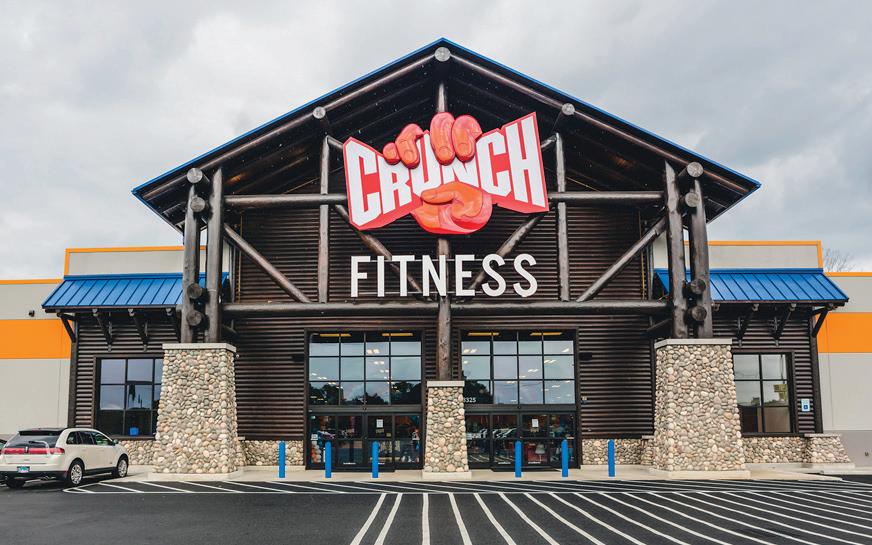
Mindbody has been built with AI-driven capabilities that automate data processing and improve insight accuracy
Mindbody software powers 40,000 fitness, wellness and beauty businesses, with software to streamline operations, save time and scale, as well as giving access to millions of consumers through the Mindbody app.

Tell us about your new features
In 2024, Mindbody introduced Analytics 2.0, an upgrade to its reporting platform built to meet the evolving needs of fitness and wellness operators.
The tool centralises critical metrics, such as sales, visits, lead conversion and memberships into one intuitive, visual dashboard, making insights easier to access and act on.

A key Analytics 2.0 feature, comparative analytics, uses anonymised data from 30,000 businesses to help operators benchmark performance and uncover growth opportunities.




Mindbody’s Analytics 2.0 is being used at Somaspace, a Pilates studio in Austin, Texas. Owner Amanda Vernor relies on the overview page, which consolidates sales, visits and member trends, to spot fluctuations and take action. For example, she identified the need to promote free consultations after noticing they were underperforming. When sales are up but ‘clients served’ is down, she can resolve issues. She can engage at-risk clients, coach staff based on performance trends, resolve challenges and adjust marketing.


With YoY tracking, franchise-wide comparisons and accounting-aligned precision, over 90 per cent of Mindbody’s clients have adopted Analytics 2.0, using it to drive smarter decisions, save time and boost retention.
Is your software AI-enabled?
Mindbody has been built with AI-driven capabilities that automate data processing and improve insight accuracy. It’s also cloud-based, meaning customers can access and manage their business operations from any device at any time, via a web dashboard and a mobile app. More: www.mindbodyonline.com

We deliver leisure management software that transforms how operators run their facilities. Our cloud-native technology sharpens operations, improves member experiences and keeps operators ahead of digital demands.
Tell us about your new features
Audience Builder has been a real breakthrough. It allows operators to segment and target communications with precision and has already led to stronger engagement and improved retention across multiple sites.


Live Borders runs more than 30 venues across the Scottish Borders and moved to our cloud-based platform to modernise its operation. The rollout gave customers a slicker, self-service booking system, cutting down on front desk queues and admin.
Scott Weir, head of commercial, says it’s been transformational for staff and members.

They’ve reduced manual work and empowered the community. It shows how our technology can make a real operational impact.
Alongside that, we’ve also launched Single Sign-On (SSO) which has been brilliant for streamlining access and strengthening security, saving teams valuable admin time.
Our Direct Debit Managed Service is taking the headache out of payment collection, and Service Flex gives customers the freedom to tailor the support they need. It’s all about giving operators the tools to stay in control, work smarter and deliver better member experiences.
Is your software AI-enabled?
We’re embedding AI across the product, enabling smarter analytics, better forecasting and quicker decision-making.
Operators can personalise member experiences, spot usage patterns early, and automate reporting. It’s smarter software, and it’s already making their day-to-day smoother. Our platform is fully cloud-based, so it’s secure, scalable and flexible by design.
More: www.gladstonesoftware.com

The Audience Builder allows clubs to segment and target members more precisely
Perfect Gym is a scalable, cloud-based gym management platform built for fitness chains. It automates operations, improves member engagement, and integrates seamlessly with top tech and payment partners.
Tell us about your new features

Perfect Gym has enhanced its AI capabilities, upgraded analytics dashboards and expanded its member app features, improving personalisation, engagement and retention.








GymNation, one of the largest fitness chains in the Middle East, uses Perfect Gym’s open API, webhooks, and AI-driven modules to personalise communication and boost retention.
With AI churn prediction reaching up to 87 per cent accuracy, GymNation can proactively engage at-risk members. Its automation engine responds to leads within 12 seconds, streamlining onboarding and driving conversion.

We’ve also strengthened integrations with global tech partners via our open API, allowing operators to fully tailor their ecosystem. Enhanced enterprise tools such as centralised reporting and advanced billing workflows now support more complex fitness operations.
These updates help operators cut admin time, optimise performance across locations and offer a more connected member experience, leading to measurable gains in efficiency, revenue and satisfaction.
Is your software AI-enabled?
Perfect Gym uses AI to power insights, predict churn and personalise communication. Operators can also extend functionality with AI-enabled integrations via our open API, helping them make smarter decisions and automate more processes.
Our cloud infrastructure ensures secure, always-on access, supported by ISO 27001 certification, firewalls, real-time monitoring, and frequent data backups. ● More: www.perfectgym.com





For more insight, or to get in touch with the companies featured, visit www.fitness-kit.net and type in their keyword

The PelviPower product line for pelvic floor and core health was created by PonteMed, a Swiss-based innovator of Functional Magnetic Stimulation (FMS), the line offers a specialised suite of non-invasive training systems designed to transform how clinics, wellness centres and fitness clubs approach core and pelvic rehabilitation.

“The chairs deliver magnetic pulses to the pelvic floor”
Lisa Slavova
pod
The company’s products are PelvicFMS Chair – a medical device tailored for physiotherapy and rehab; PelviX Chair – a fitness-focused system to enhance performance and core strength; and PelviBalance Chair – a compact solution ideal for health clubs, spas and wellness studios.
The chairs use a copper-ion coil system to deliver precise magnetic pulses to the pelvic floor and deep core muscles – all contact-free, non-invasive and undertaken fully-clothed. With no internal probes or discomfort, sessions are silent and hygienic, making the tech suitable for users of all ages and fitness levels.
PonteMed’s Lisa Slavova says: “Wellbeing starts at the core. Our mission is to make pelvic and

core strength training accessible, premium and empowering, while delivering measurable results and a strong business case.”
fitness-kit.net keyword
PonteMed
Energym has launched the Eco Pod – a modular, energy-generating fitness and wellbeing hub, purpose-built for wellness facilities, hospitality, education and other public and commercial spaces.
Pods contain RE:GEN smart bikes

At the heart of the pod are Energym’s award-winning ReGen smart-bikes and OHM portable power packs, that allow users to convert workout energy into clean, usable electricity.
The pod has been designed as more than a place to pedal – it’s a wellness zone, with space for yoga, meditation and recovery activities. Made of low-impact materials, such as recycled ocean plastics, rubber tyres and driftwood panelling, the pod is available in 3x2 metre or 4x3 metre footprints.
It’s customisable with branding and digital content integrations.
“It’s designed to help organisations demonstrate sustainability in action”
Natasha Nagra

“The Eco Pod was born from the idea of taking our clean-energy tech beyond the gym and into spaces where it can have even greater impact,” says Natasha Nagra, head of brand and partnerships at Energym.
fitness-kit.net keyword
Energym

“The platform enables deeper stretches”
Matthew Pengelly
platform
a

Matrix Fitness has introduced the Stretch Platform, a purpose-built solution designed to deliver a stretching and recovery experience. Its open-frame design, varied support bar heights and inclined platform can accommodate a wide range of users. Fixed support pads and handholds help them explore a greater range of motion with confidence, while simple entry and exit allow for ease of use in high-traffic environments.
A placard on the platform highlights muscle groups and an integrated device holder offers users access to stretching tutorials and entertainment. With no moving parts and durable premium pads, the platform is also easy to maintain and move around a club.
The platform has demonstrated measurable benefits during testing, including deeper stretches and greater joint mobility compared to floor-based stretching.
“Delivering recovery options is no longer an afterthought – it’s an expectation,” says Matthew Pengelly, MD of Matrix Fitness UK. “The Stretch Platform offers a stretching experience that supports strength gains, reduces injury risk and promotes overall wellness. It’s a powerful addition to any facility seeking to deliver a complete, end-to-end fitness journey.”
fitness-kit.net keywords
Matrix Fitness
Armitage Shanks has launched the Avon 21, a pre-plumbed pushbutton shower with shower panel, designed as a ready-to-install solution for health club washrooms.
Engineered for both retrofit and new build, it features an aluminium
body that conceals fixings for a clean, contemporary look.
A push-button activates a preset 30-second flow of water, ensuring minimal water waste.
The unit can work with thermostatic mixing valves

“Avon 21 is built to last, with a five-year guarantee”
Anil
Madan

to ensure safe, comfortable water temperature control.
Flow is managed via a factoryfitted six-litres-per-minute flow regulator in the shower head, with an alternative eight-litres-perminute regulator also supplied.
The panel arrives pre-plumbed for fast, top-inlet installation and includes a maintenance tool for straightforward servicing.
fitness-kit.net keywords
Armitage Shanks


Tap into HCM ’s comprehensive supplier directory and profiles to get in touch with the industry’s leading suppliers of products and services to power your business

CLICK HERE to search for a supplier on HCM’s Company Profiles Hub












CLICK HERE to visit the HCM Handbook Company Profiles













Using mobile phones to promote health could improve mental health in young people
School smartphone researcher, Victoria Goodyear, is calling on the fitness industry to support young people in their mobile phone use
Fitness professionals have a key role to play in mitigating the harms of social media, says school smartphone researcher, Victoria Goodyear.
Associate professor in pedagogy, physical activity and health at the University of Birmingham, Goodyear led The Smart School Study, which was funded by the National Institute for Health and Care Research. The three-year study, ran from 2022 to 2025 and involved 1,200 pupils from 30 UK schools with a mix of permissive policies and phone bans.
While researchers found no difference in outcomes for adolescents attending a school with a smartphone ban compared to those at schools which take a permissive approach, they did find that the more time young people spend on their phones and social media, the worse the outcomes in terms of mental wellbeing, anxiety, depression, physical activity levels, sleep, disruptive classroom behaviour and educational attainment in English and maths.
Turning to the positive Goodyear told HCM this means tackling phone use in schools isn’t enough to make an impact, the issue needs a holistic, multi-faceted approach and the fitness industry has a role to play.
“There are two key priorities,” she says. “One is age appropriate design of phones and social media – embedding features and technologies that have children’s wellbeing in mind. We
The fitness industry could take a lead role in showing how mobile phones can be used in a positive way to support wellbeing
want to see measures that don’t promote endless scrolling that can be associated with keeping people on their phones and an end to algorithms that can promote harmful content.
“The second priority is to equip young people with digital skills that are conducive to their wellbeing. Education is also needed for parents, schools and teachers,” she said.
“It’s about building up a societal and ecosystem approach that’s addressing everybody involved with young people, rather than just addressing schools.”
“The fitness sector could actually lead the way in this,” says Goodyear, who is working with UK Active.
“Lots of the content young people look at is related to body image and we know fitness professionals are active on social media, so they have a responsibility to educate and be good role models.
“The fitness industry could take a lead role in showing how mobile phones can be used in positive ways to impact physical activity and sleep and that moderate levels of sensible, responsible and safe use could be supported at the same time.”
The Birmingham team is now working on producing actionable guidance resources. l
More: www.hcmmag.com/mobiles







































